Le Royaume de Champā est un État de culture hindouiste et de langue malayo-polynésiense situé dans la zone centrale du Viêt Nam moderne entre les II er et XVII er siècles. Le nom de Champā provient d’une région de l’ancien Bengales, aujourd’hui au Bihar, en Inde, dont la capitale était Champâpuri. Les Chams suivaient un système de castes assez semblable à celui en vigueur en Inde , mais offraient aux femmes une position plus importante dans les affaires concernant la famille et le mariage. Leur langage écrit était basé sur le sanskrit.
Das Champa Königreich hat ein Hindu-Kultur und eine Malayo-polynésiense Sprache im zentralen Bereich von Vietnam zwischen II und XVII Jahrhundert . Der Name des Champa stammt aus einem Gebiet des alten Bengali, heute Bihar in Indien, dessen Hauptstadt Champâpuri. Die Cham folgte eine ziemlich ähnlich indisches Kastensystem, wobei bot Frauen einen höheren Stellenwert in die Familie und Ehe. Ihre Schriftsprache basiert auf Sanskrit.
Between the 2nd and the 15th centuries, The Kingdom of Champa at times included the modern provinces of Quang Nam, Quang Ngai , Binh Dinh , Khanh Hoa . Though Cham territory included the mountainous zones west of the coastal plain and (at times) extended into present-day Laos, for the most part, the Cham remained a seafaring people dedicated to trade, and maintained few settlements of any size away from the coast.
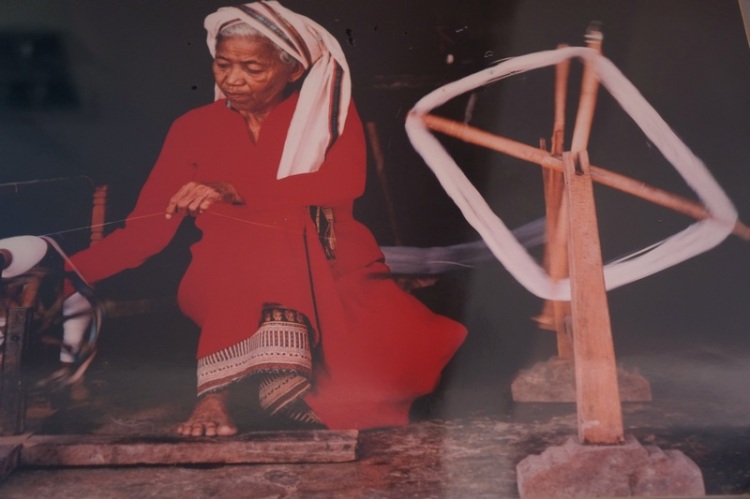
Zwischen dem 2. und dem 15. Jahrhundert, das Königreich Champa enthalten die heutigen Provinzen Quang Nam, Quang Ngai, Binh Dinh, Khanh Hoa. Obwohl Cham Gebiet gehörten die Bergregionen westlich von der Küstenebene und in heutigen Laos. Die Cham blieb ein Seefahrervolk gewidmet mit den Handel und wenige Siedlungen jeder Größe von der Küste entfernt .
Historical Champa consisted of up to five principalities:
– Indrapura : Da Nang
– Amaravati : Quang Nam
– Vijaya : Binh Dinh
– Kauthara : Khanh Hoa
– Panduranga : Ninh Thuan
Champa reached its apogee in the 9th and 10th centuries. Thereafter, it began a gradual decline under pressure from Dai Viet, the Vietnamese polity centered in the region of modern Hanoi. In 1832, the Vietnamese emperor Minh Mang annexed the remaining Cham territories.
Historische Champa bestand bis zu fünf Fürstentümer:
– Indrapura: Da Nang
– Amaravati: Quang Nam
– Vijaya: Binh Dinh
– Kauthara: Khanh Hoa
– Panduranga: Ninh Thuan
Champa erreicht ihre Höhepunkt im 9. und 10. Jahrhundert. Danach wird das Königreich mit einem allmählichen Rückgang . Es begann unter dem Druck von Dai Viet, der vietnamesischen Staat auf dem Gebiet der modernen Hanoi . Im Jahre 1832 der vietnamesische Kaiser Minh Mang annektiert die restlichen Cham Territorien.
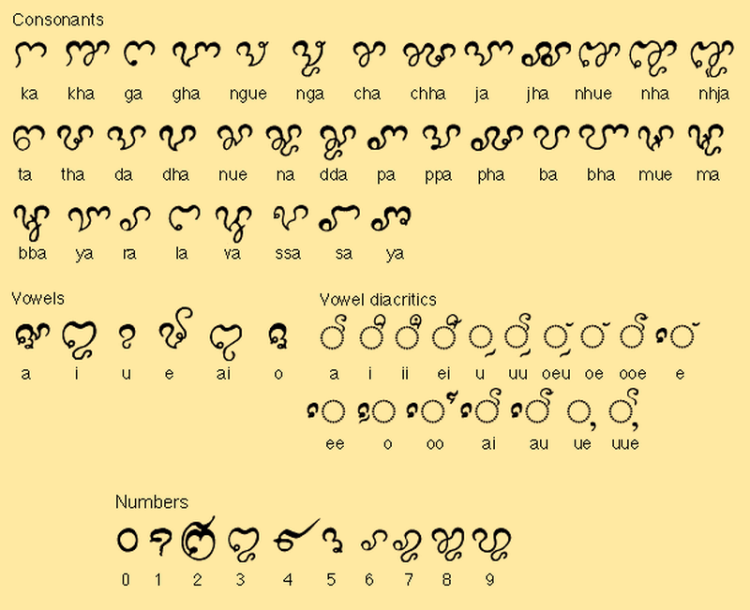
Les Chams vivaient essentiellement de la pêche et de piraterie. Ils entretenaient des relations conflictuelles avec leurs voisins : pendant des siècle contre le puissant empire Khmer, ainsi que contre le Dai Viêt lorsque ce dernier se fut libéré du joug chinois, au Xe siècle. A cette époque l’unité du pays viet nouvellement indépendant, était fragile et le Champa en profita pour intervenir dans les conflits internes. Lê Hoang (dynastie Dinh) roi du nouveau royaume viêt enfin unifié sous le nom de Dai Co Viêt, envoya un ambassadeur au roi du Champa. Ce dernier sûr de sa supériorité retint l’ambassadeur et défia ainsi le Dai Co Viêt. De sa capitale, Hoa Lu, Lê Hoang monta une expédition et détruisit la capitale cham Indrapura (Dông Du’o’ng) en 982. A partir de cette date, les deux états furent sans cesse en conflit.
En 1177 le roi Cham Jaya Indravarman IV, après s’être assuré de la neutralité du Dai Viêt, lança ses troupes sur l’empire Khmer alors en pleine apogée, il saccagea la capitale Angkor et occupa le pays pendant quatre années. En 1371, un autre roi cham nommé Chê Bong Nga réussit à déjouer plusieurs attaques viêt et s’empara finalement de Thang Long sa capitale (Ha Nôi de nos jours), mais il fut trahi et tué au combat.
En 1471 prenant pour prétexte les pillages des côtes de son pays par les Chams, le grand roi viet Lê Anh Tông attaqua le Champa par les voies maritimes et terrestres. La chute de la glorieuse capitale Vijaya fut sans appel. Lê Anh Tông fit décapiter plus de quarante mille prisonniers et en déporta trente mille. Après avoir rasé la capitale, il annexa plus de la moitié du Champa dont il peupla les terres hostiles de miséreux et de pauvres paysans et de condamnés. La perte définitive de Vijaya annonça la fin d’une longue lutte acharnée entre deux pays mais aussi la victoire, dans cette région, du monde sinisé sur du monde indianisé. ( asiedesheritages.com )
Trên đường về
Một ngày biếc thị thành ta rời bỏ
Quay về xem non nước giống dân Hời
……………………………………………………..
……………………………………………………..
Đây, những Tháp gầy mòn vì mong đợi
Những đền xưa đổ nát dưới Thời Gian
Những sông vắng lê mình trong bóng tối
Những tượng Chàm lở lói rỉ rên than
Đây, những cảnh ngàn sâu cây lả ngọn
Muôn Ma Hời sờ soạng dắt nhau đi
Những rừng thẳm bóng chiều lan hỗn độn
Lừng hương đưa, rộn rã tiếng từ qui!
Đây, chiến địa nơi đôi bên giao trận
Muôn cô hồn tử sĩ hét gầm vang
Máu Chàm cuộn tháng ngày niềm oán hận
Xương Chàm luôn rào rạt nỗi căm hờn
Đây, những cảnh thái bình trong Chiêm quốc
Những cô thôn vàng nhuộm nắng chiều tươi
Những Chiêm nữ nhẹ nhàng quay lại ấp
Áo hồng nâu phủ phất xõa lời vui
Đây, điện các huy hoàng trong ánh nắng
Những đền đài tuyệt mỹ dưới trời xanh
Đây, chiến thuyền nằm mơ trên sông lặng
Bầy voi thiêng trầm mặc dạo bên thành
Đây, trong ánh ngọc lưu ly mờ ảo
Vua quan Chiêm say đắm thịt da ngà
Những Chiêm nữ mơ màng trong tiếng sáo
Cùng nhịp nhàng uyển chuyển uốn mình hoa
Những cảnh ấy Trên Đường Về ta đã gặp
Tháng ngày qua ám ảnh mãi không thôi
Và từ đấy lòng ta luôn tràn ngập
Nỗi buồn thương nhớ tiếc giống dân Hời
Chế Lan Viên
On The Way Home
One day, I left the city and went back,
to see the hills and streams of my Cham race.
………………………………………………
………………………………………………
Worn thin with longing, here are my Cham towers;
old temples crushed beneath the weight of time;
deserted rivers crawling through the night;
Cham statues moaning their foul sores of rust.
Here are deep woods, where treetops droops-Cham ghosts
prowl them together, groping in the dark;
dense forests where, pell-mell, weird twilight spreads,
redolent of earth, alive with sad adieus.
Often, both sides joined battle on this field;
dead fighters’ souls roam all forlorn and howl.
Cham blood still churns with anger as time flows;
Cham bones still carry memories of hate.
Here are the sights of Champaland at peace;
lone hamlets bathed in streams of sunset gold;
Cham lasses nimbly sauntering, homeward bound,
and gaily chatting, wrapped in brown red smocks.
Here are resplendent mansions in the sun
and gorgeous palaces beneath blue skies,
proud warboats sleeping on the quiet stream,
huge elephants calmly walking by the wall.
In the ethereal glow of pearls, here are
Cham kings and courtiers drunk on ivory flesh.
Cham beauties lulled to dream by songs of flutes,
swaying in rhythm, bodies fair as flowers.
I’ll see them all, those scenes, on my way home-
they’ve haunted me as days and months pass by;
and ever since, my heart has overflown
with sorrow and regret for my Cham race.
from “Dieu Tan” collection by Che Lan Vien (1920-1992)
translated by Huynh Sanh Thong
excerpted from The Viet Nam Review, No. 2,
Spring/Summer 1997
Việt Nam có nhiều tháp chăm . Có những tháp bị hoan phế theo thời gian, có những tháp chưa khám phá ra. Trong bài nầy tôi viết về những tháp chăm mà tôi đả tham quan trong những chuyến du lịch Việt Nam.
Vietnam hat viele Cham Türme. Viele Cham Türme sind in Lauf der Zeit zerstört , viele sind noch nicht entdeckt . In diesem Artikel schreibe ich über die Cham Türme, die ich während meine Reise in Vietnam besuche.
Vietnam has many Cham towers. Many Cham towers are destroyed in the course of time, many have not yet been discovered. In this article I write about the Cham towers that I visit during my trip to Vietnam.
Beaucoup de temples Cham sont détruites au cours du temps, beaucoup n´ont pas encore été découverts. Dans cet article, j`écris les temples Cham que je visite pendant mon voyage au Vietnam.
Khi đi du lịch mỗi một người sẽ có những ý thích cũng như sẽ có ấn tượng khác nhau về những nơi đã đi qua, tùy theo sở thích và quan điểm của mình. Tôi xin được chia sẻ cùng bạn hình ảnh và ý nghĩ của tôi về chuyến đi Việt Nam mà tôi đã đi qua trong bài sau đây.
When traveling every person will have the whim and will have different impressions of the place has to go through, depending on preference and their views. I would like to share with you pictures and my thoughts about Vietnam trip that I went through in the following article.
Bei Reisen jede Person, die Lust und Laune haben und unterschiedliche Eindrücke des Ortes haben , je nach Vorliebe und ihre Ansichten. Ich würde gerne mit Ihnen meine Fotos und meine Gedanken über Vietnam Reise, die ich durchgemacht in den folgenden Artikel zu teilen.
Panduranga
Nhóm đền tháp Chăm Pôshanư tọa lạc trên đồi Bà Nài thuộc xã Phú Hải về phía Đông Bắc cách thành phố Phan Thiết chừng 7 km được người Chăm xây dựng từ cuối thế kỷ VIII đầu thế kỷ IX thuộc phong cách kiến trúc nghệ thuật Hòa Lai- một trong những phong cách nghệ thuật cổ của Vương quốc Chămpa.
Poshanu Turm liegt auf dem Hügel in Phu Hai Ba Nai nordöstlich von der Stadt Phan Thiet ca. 7 km Sie wurden aus dem späten achten Jahrhundert IX Jahrhunderts architektonischen Stil Kunst Hoa Lai erbaut – eine in der Art-Stil des alten Königreichs von Champa.
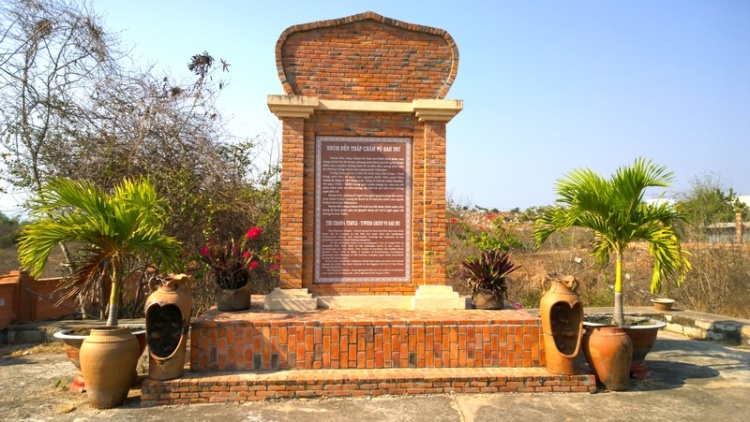
The complex is a masterpiece of the Cham nation, where three towers can still been admire. These constructions of Hoa Lai artistic style date back to the 8th century. They are located on a hill, 7km north-east of Phan Thiet city.
Desolate forests, burying how many grudges and resentments
Thousand winds howl, echoing myriad voices through the somber darkness
Cranes cry in the mist, grievingly speak of a mighty past
Fireflies linger, as the shadow of somebody returning amid a long night.
Quiet forests, high cliffs, deep waterfalls,
Forlorn hills, whispering streams, deserted grottos
Thousand tunes and sounds, somberly chant through time
Silently blend into a song, mourning the loss of a country.
People of the ancient time, where have you gone ?
Leaving tall sacred towers standing in sorrow.
Palaces and mansions, where are they ?
Now only a solid green color stands in sight.
Vijaya of the Central land, the road to here,
Blood soaked in land, traces haven’t faded
White bones buried deep with breath of anger and resentment…
hard to dissolve.
There, out in the vast ocean, whose fleet
Rides the waves of afar
As the dreamy image of Po Binasuor’s armada…
crossing the sea… returning to the capital.
Thousands tons elephants frightened enemies
Myriad waves of Champa soldiers marched like floods bursting ashore.
Victory celebration, music played, echoed through the sacred land of Vijaya
Night banquets held, palace maids chorused songs about Champa.
A glorious past age, people of the Champa nation
Once held legacies and victories, that echoed through mountains and sea.
That old dream, though faded, blown away with time
Spirits of thousand generations still linger with the land.
Where are people of the ancient time ?
High tombs have turned into deep trenches.
Where are palaces and mansions ?
Now only a solid green color of forest.
Ancient people, where are you ?
Ancient people, where are you ?
Ancient people, where are you ?
Tháp Chăm Pô Đam (Pô Tằm) là tháp Chăm ở làng Lạc Trị, xã Phú Lạc, huyện Tuy Phong, tỉnh Bình Thuận. Tháp này xây để thờ vua Po Dam, hay còn gọi là Po Kathit (Bàn La Trà Duyệt) của người Chăm. Po Dam cũng là nhóm tháp khác biệt hơn so với các nhóm tháp Chăm thông thường vì nó được xây dưới chân đồi thay vì trên đỉnh đồi, các cửa chính quay về hướng Nam thay vì hướng Đông.
Po Dam (Po Tam) Turm liegt an Lac Dorf Tri, Phu Lac, Tuy Phong, Binh Thuan Province. Dieses Turm wurde gebaut, um den bekannten König Po-Damm, auch als Po Kathit (Bàn La Trà Duyệt) der Cham zu verehren. Po-Damm Turm ist anders als die üblichen Champa Türmen , weil sein Turm wurde in den Ausläufern statt auf der Spitze des Hügels gebaut, die Haupttüre richten nach Süden statt nach Osten.
Kauthara
Tháp Po Rome tọa lạc trên một ngọn đồi thuộc thôn Hậu Sanh, xã Phước Hữu, huyện Ninh Phước, tỉnh Ninh Thuận (cách Thành phố Phan Rang – Tháp Chàm 15km về phía Nam). Tháp Po Rome xây dựng vào cuối thế kỷ XVI đầu thế kỷ XVII, được coi là một bản sao không hoàn hảo của tháp Poklongarai. Công trình là một tổng thể hai tháp: tháp chính thờ vua Po Rome – một trong những vị vua được người Chăm hóa thần và tháp phụ thờ hoàng hậu.
Po Rome Turm liegt auf einem Hügel an Hau Sanh, Huu Phuoc, Ninh Phuoc , in der Provinz Ninh Thuan ( 15 km südlich von Phan Rang) gelegen. Po Rom Turm wurde im späten sechzehnten Jahrhundert die frühen siebzehnten Jahrhundert erbaut, gilt als eine unvollkommene Kopie Poklongarai Turm. Es besteht aus zwei Türmen: der Hauptturm König Po Rome- eine der Cham Könige waren Götter und ein Seitensturm zu verehren die Königin.
Tháp Hòa Lai gồm có ba tháp hiện nằm ở làng Ba Tháp, xã Tân Hải, huyện Ninh Hải, tỉnh Ninh Thuận. Tháp Hòa Lai là một khu di tích lớn, nằm trên vùng đất cao nhất của một cánh đồng dài và rộng ở phía bắc thành phố Phan Rang–Tháp Chàm, cả khu di tích được xây dựng trong một khoảnh đất chữ nhật kéo dài theo hướng đông – tây, dài 200 mét, rộng 125 mét.
Hoa Lai Turm besteht aus drei bestehenden Türme im Dorf drei Türme, Tan Hai Gemeinde, Ninh Hai Bezirk, Provinz Ninh Thuan . Hoa Lai Turm ist ein großes Denkmal, auf den Anhöhen von einer langen und weiten Ebenen in der nördlichen Stadt Phan Rang-Thap Cham, der Turm wurde als Denkmal auf einem rechteckigen Grundstück gebaut , 200 Meter lang, 125 Meter breit.
Tháp Poklong Garai nằm trên đồi Trầu, thuộc phường Đô Vinh, cách trung tâm thành phố Phan Rang – Tháp Chàm 9 km về phía Tây Bắc, được xây dựng vào cuối thế kỷ 13 đầu thế kỷ 14 (thời vua Shihavaman, người Việt gọi là Chế Mân) để thờ vua Po Klong Garai (1151-1205), vị vua đã có nhiều công lớn trong việc cai trị đất nước.
Poklong Garai Turm liegt auf Hügel Trau ca. 9 km nordwestlich Zentrum der Phan Rang und wurde im späten 13. Jahrhundert und frühen 14. Jahrhundert (König Shihavaman, vietnamesisch Che Man), den König Po Klong Garai (1151-1205) gebaut. Der König hat einen großen Beitrag zur Führung des Landes getan.
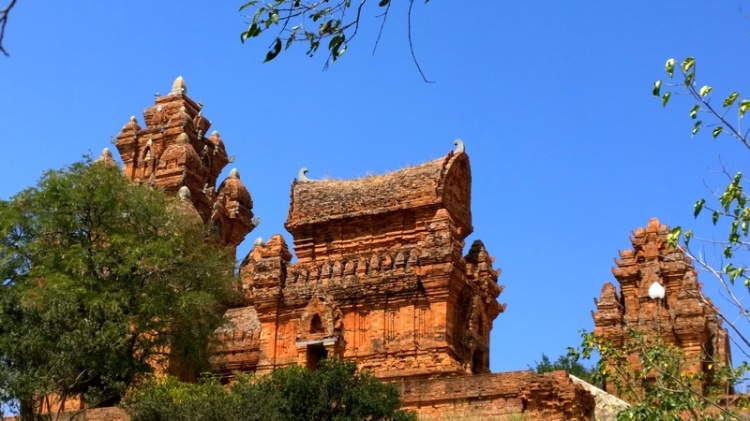
Po Klong Garai is a Cham temple tower located in the medieval Cham principality of Panduranga, near the city of Phan Rang in what is now southern Vietnam. It was built in honor of the legendary king Po Klaung Garai by the historic King Jaya Simhavarman III, who ruled Champa from c. 1285 to 1307 and is called Chê Mân in Vietnamese
Tháp Po Nagar là ngôi đền Chăm Pa nằm trên đỉnh một ngọn đồi nhỏ cao khoảng 10-12 mét so với mực nước biển, ở cửa sông Cái (sông Nha Trang) tại Nha Trang, cách trung tâm thành phố khoảng 2 km về phía bắc, nay thuộc phường Vĩnh Phước. Tên gọi „Tháp Po Nagar“ được dùng để chỉ chung cả công trình kiến trúc này, nhưng thực ra nó là tên của ngọn tháp lớn nhất cao khoảng 23 mét. Ngôi đền này được xây dựng trong thời kỳ đạo Hindu (Ấn Độ giáo) đang cường thịnh khi Chăm pa trong giai đoạn có tên gọi là Hoàn Vương Quốc, vì thế tượng nữ thần có hình dạng của Umar, vợ của Shiva.
Po Nagar Cham-Tempel befindet sich auf einem kleinen Hügel hoch über 10-12 Meter über dem Meeresspiegel, an der Mündung des Cai River (Fluss Nha Trang) in Nha Trang, etwa 2 km nördlich Norden von Stadt Zentrum . Der Name „Po Nagar“ wird verwendet, um die gesamte Struktur zu beschreiben, aber tatsächlich ist es der Name des Turms beträgt etwa 23 Meter hoch . Der Tempel wurde während die Höhe Punkt der Hindu (Hinduismus) als wohlhabenden Champa Periode , genannt Britannien, daher förmigen Göttin der Umar, der Frau von Shiva.
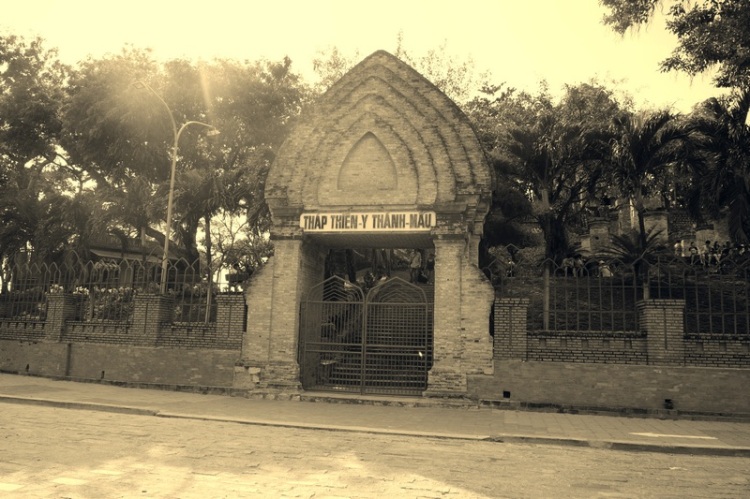
Po Nagar ist ein ehemaliger hinduistischer Tempelkomplex des Champa-Reiches in Nha Trang, einer Küstenstadt im Süden Vietnams. Die Tempelanlage wurde um die Mitte des 8. Jahrhunderts von den Cham gegründet, im 9. Jahrhundert erweitert und nach ihrer Zerstörung im 11. Jahrhundert wiederaufgebaut
Le Col des Nuages est un col au Centre du Viêtnam. Il fait 21km de long. Il est la frontière entre le Dai Viêt et le royaume de Champa. Aujourd’hui le col fait la frontière naturelle entre la province de Thừa Thiên-Huế et la ville de Đà Nẵng.
„Vãn quá Hải Vân quan“, Trần Quý Cáp (1870-1908)
晚過海雲關
崔嵬萬仞古雄關,
幾度登臨俯仰間。
愁眼望窮滄海外,
怒拳揮破白雲端。
孤舟分掉荒村暮,
倦鳥投林古木寒。
七里縈迴穿過後,
鬱蔥佳氣五行山。
Thôi ngôi vạn nhận cổ hùng quan,
Kỷ độ đăng lâm phủ ngưỡng gian.
Sầu nhãn vọng cùng thương hải ngoại,
Nộ quyền huy phá bạch vân đoan.
Cô chu phân điệu hoang thôn mộ,
Quyện điểu đầu lâm cổ mộc hàn.
Thất lý oanh hồi xuyên quá hậu,
Uất thông giai khí Ngũ Hành sơn
Chất ngất muôn trùng ải nổi danh,
Từng lên ngó xuống, ngẩng nhìn quanh.
Nắm tay hờn đấm tan mây trắng,
Con mắt sâu trông tít biển xanh.
Chim đỗ rừng già cây lạnh lẽo,
Thuyền về xóm vắng bóng chênh chênh.
Quanh co bảy dặm vừa qua khỏi,
Ló thấy Hành Sơn toả khí lành.
Khương Hữu Dụng
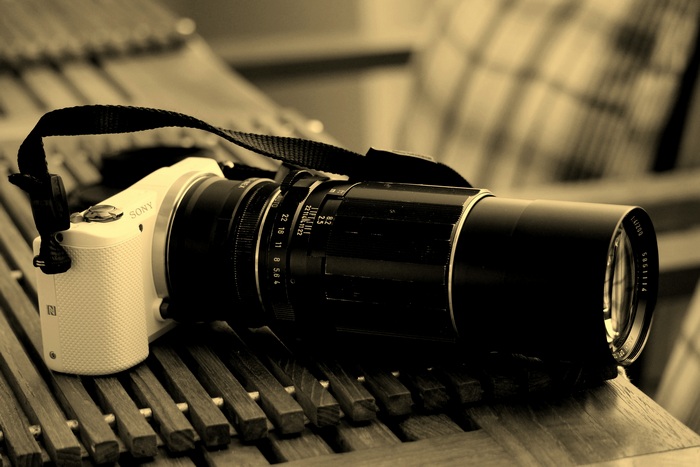
All pictures belong to my personal photo gallery. I used Fuji Fine Pix S9600 , Sony Nex -7 , Sony Alpha5000 , Olympus E 510 and Nokia Lumia 1020
The postcards are from my collection
Literatur:
1/- Wikipedia
2/- Proceedings of the seminar on Champa : held at the University of Copenhagen on May 23, 1987
3/- Champā : history & culture of an Indian colonial kingdom in the Far East, 2nd-16th century A.D., R C Majumdar
4/- The Champa Kingdom : the history of an extinct Vietnamese culture, Georges Maspero; Walter E J Tips
5/- Le Pāṇḍuraṅga (Campā), 1802-1835 : ses rapports avec le Vietnam, Po Dharma.
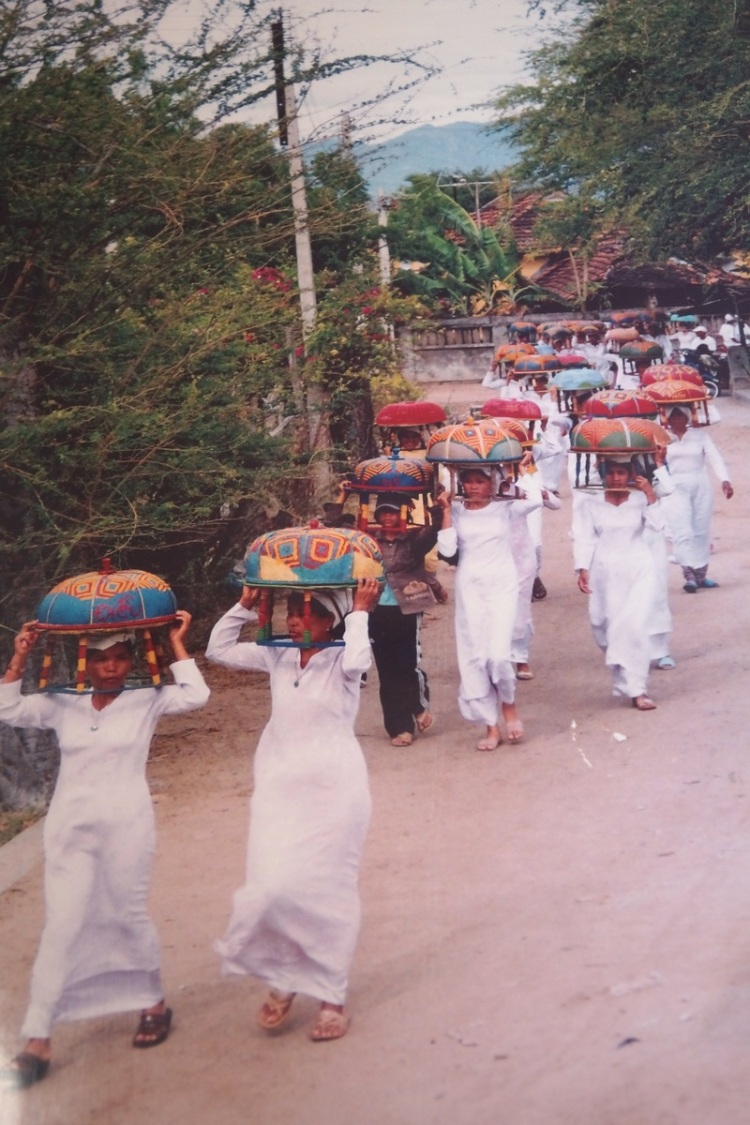
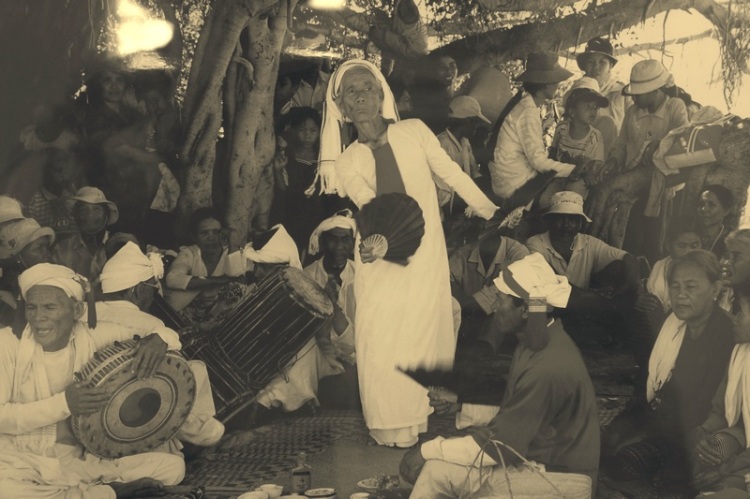
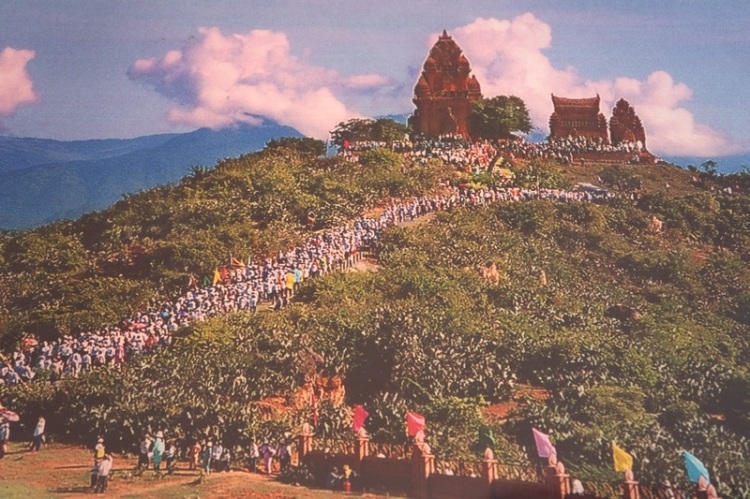
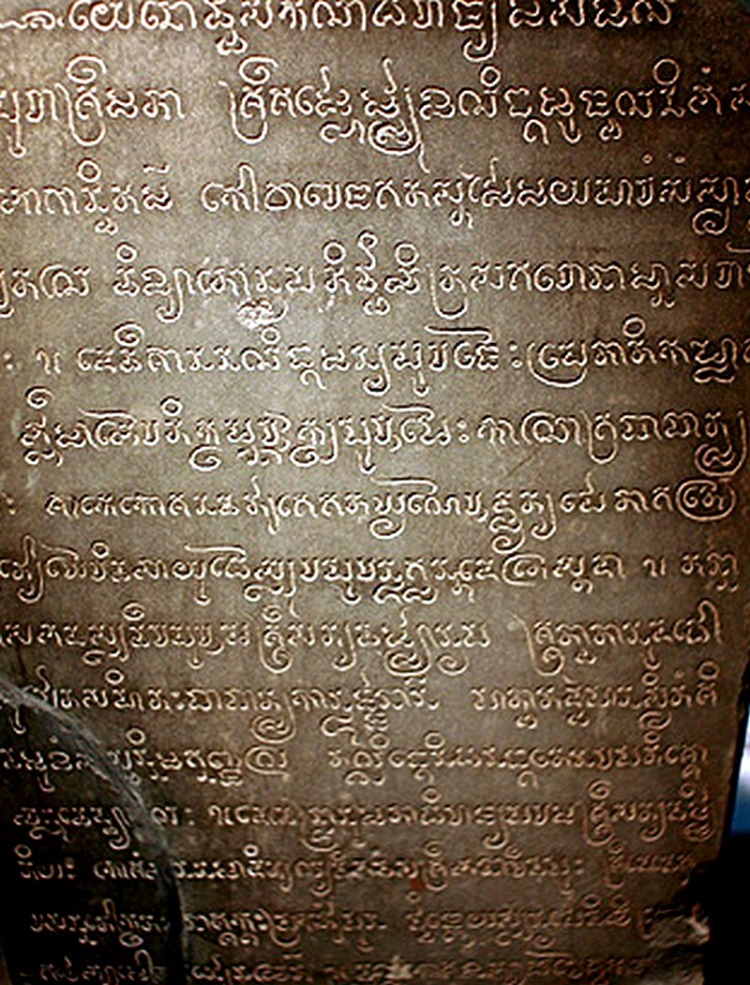
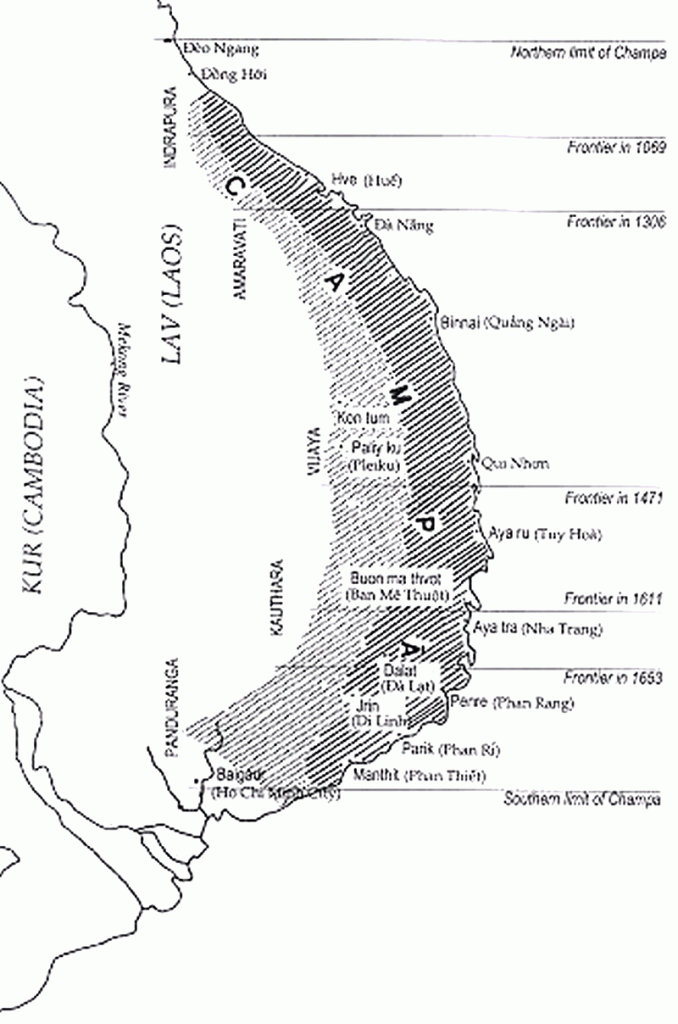
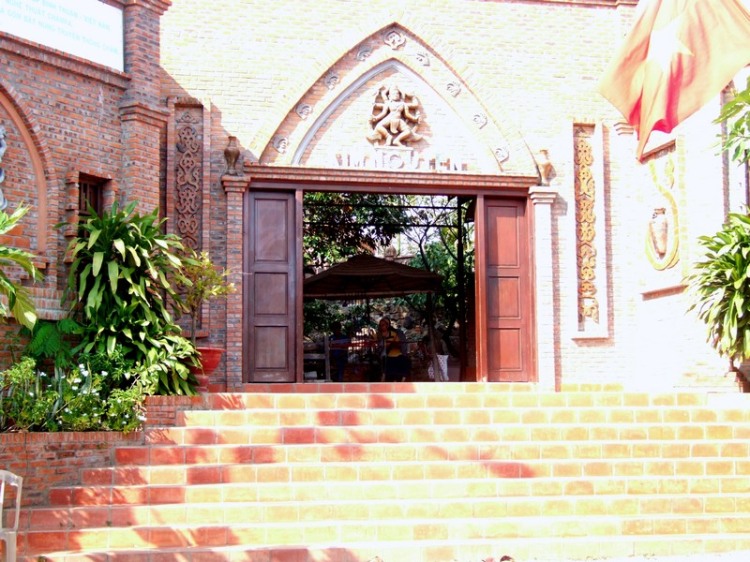
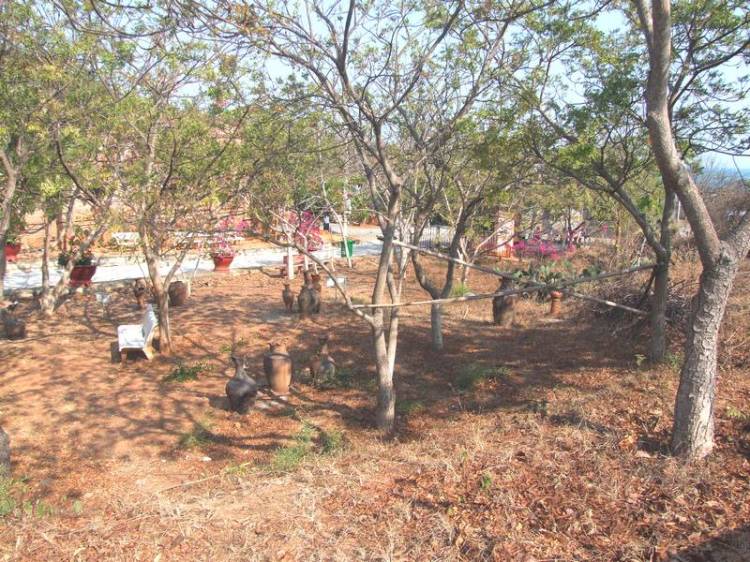
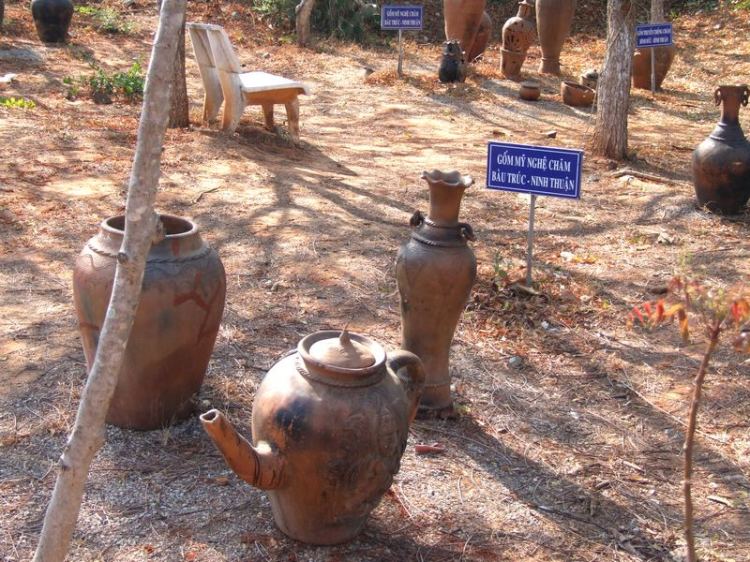
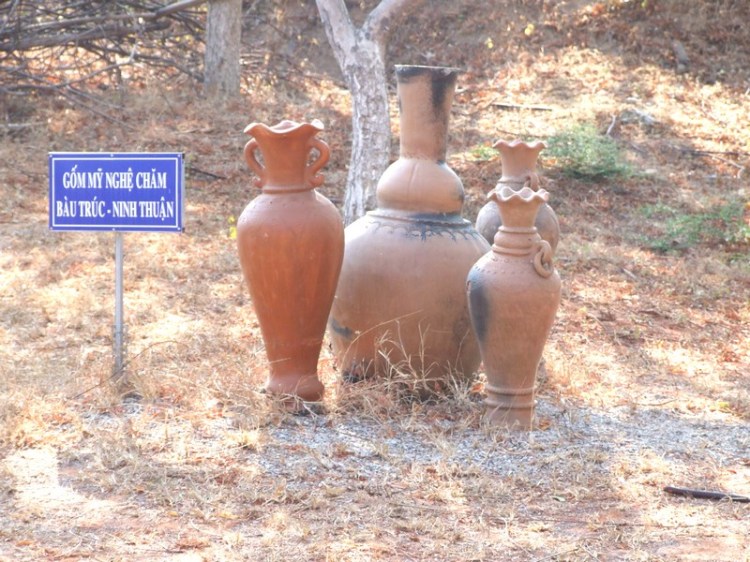
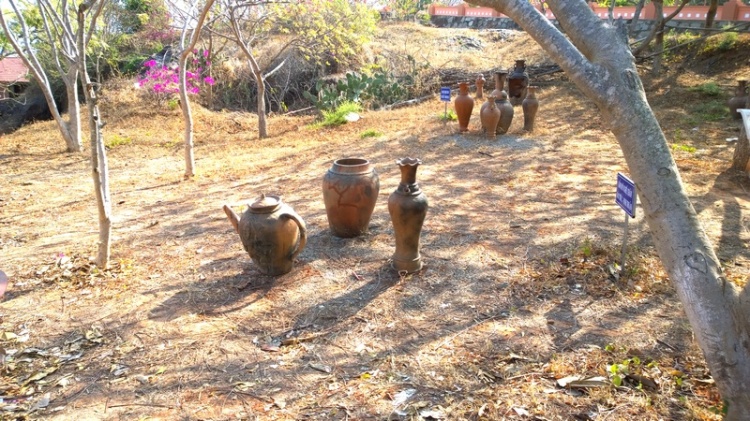
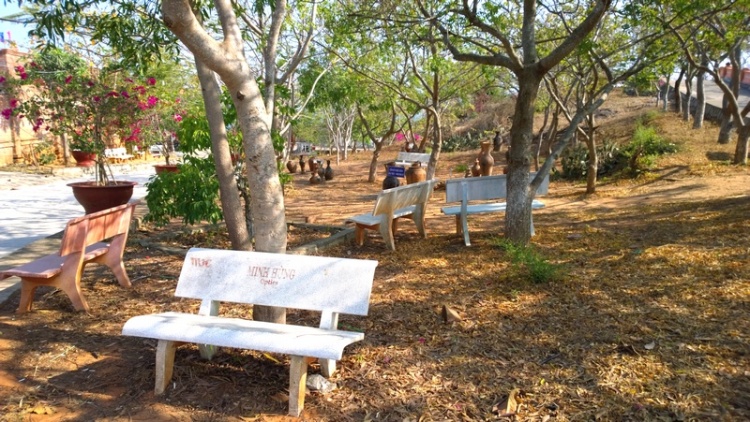
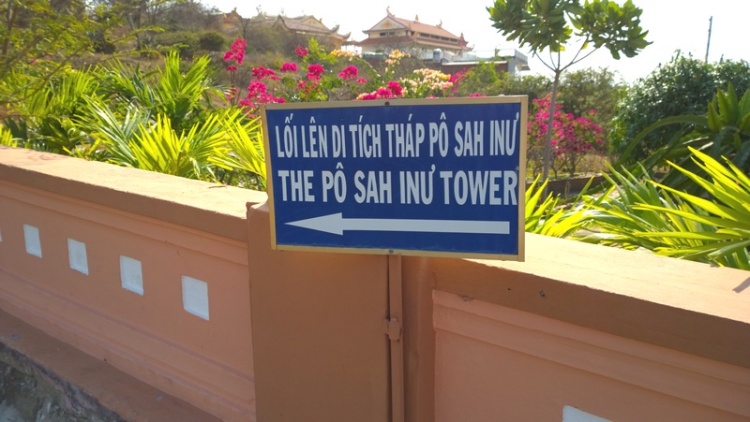
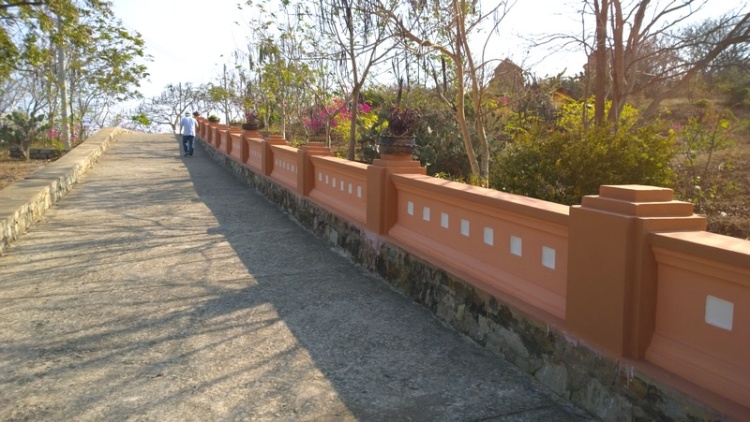
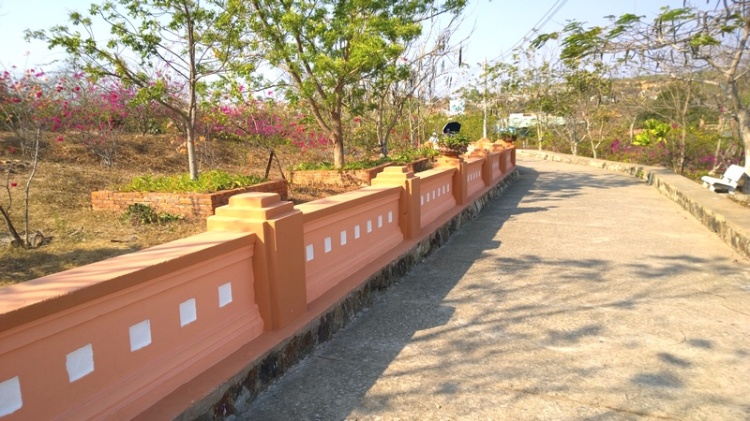
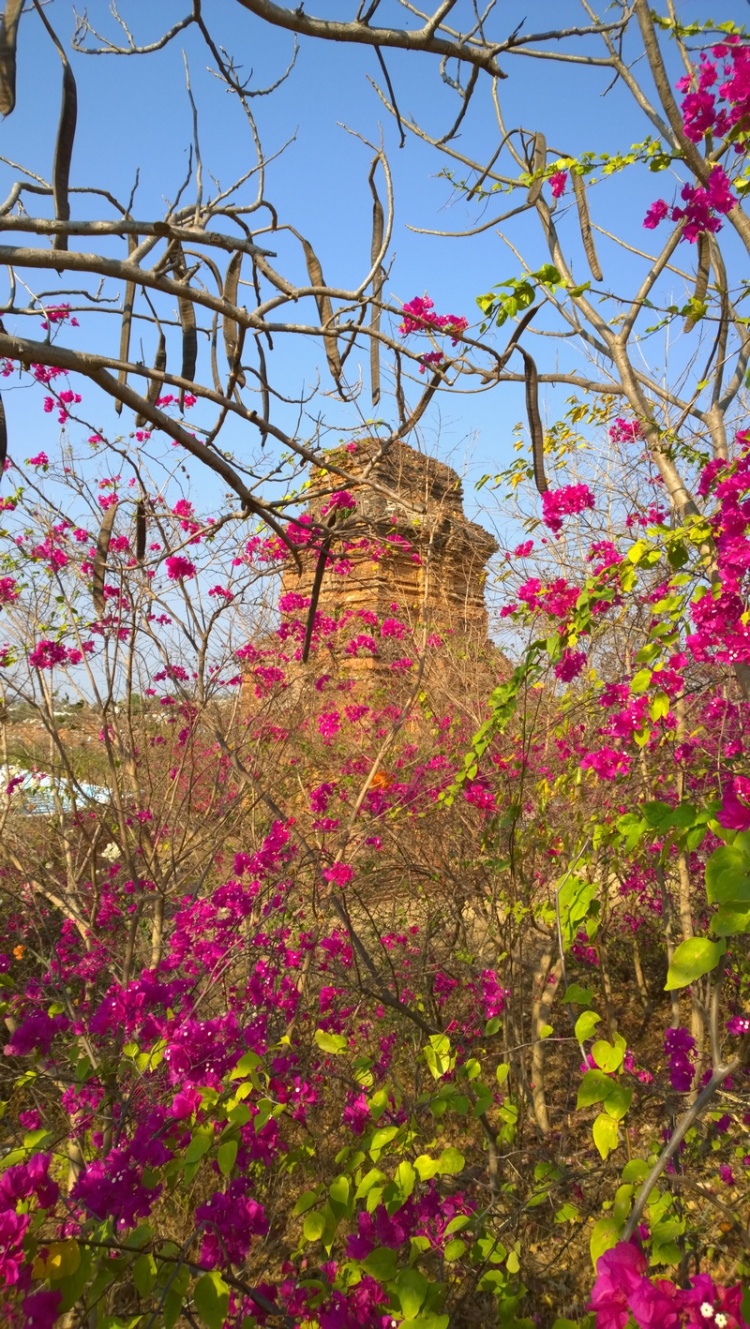
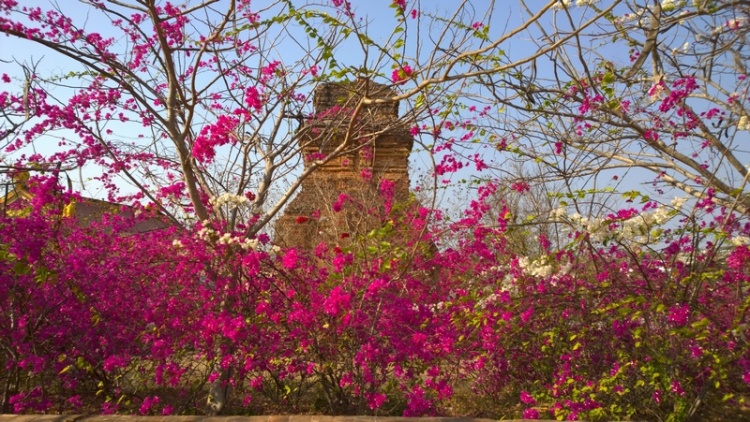
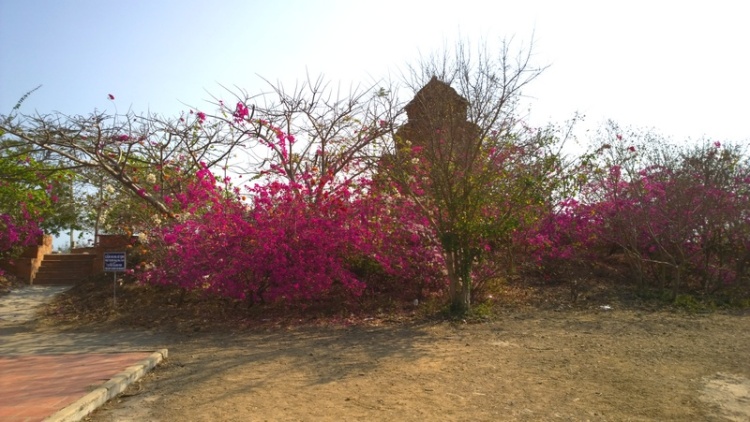
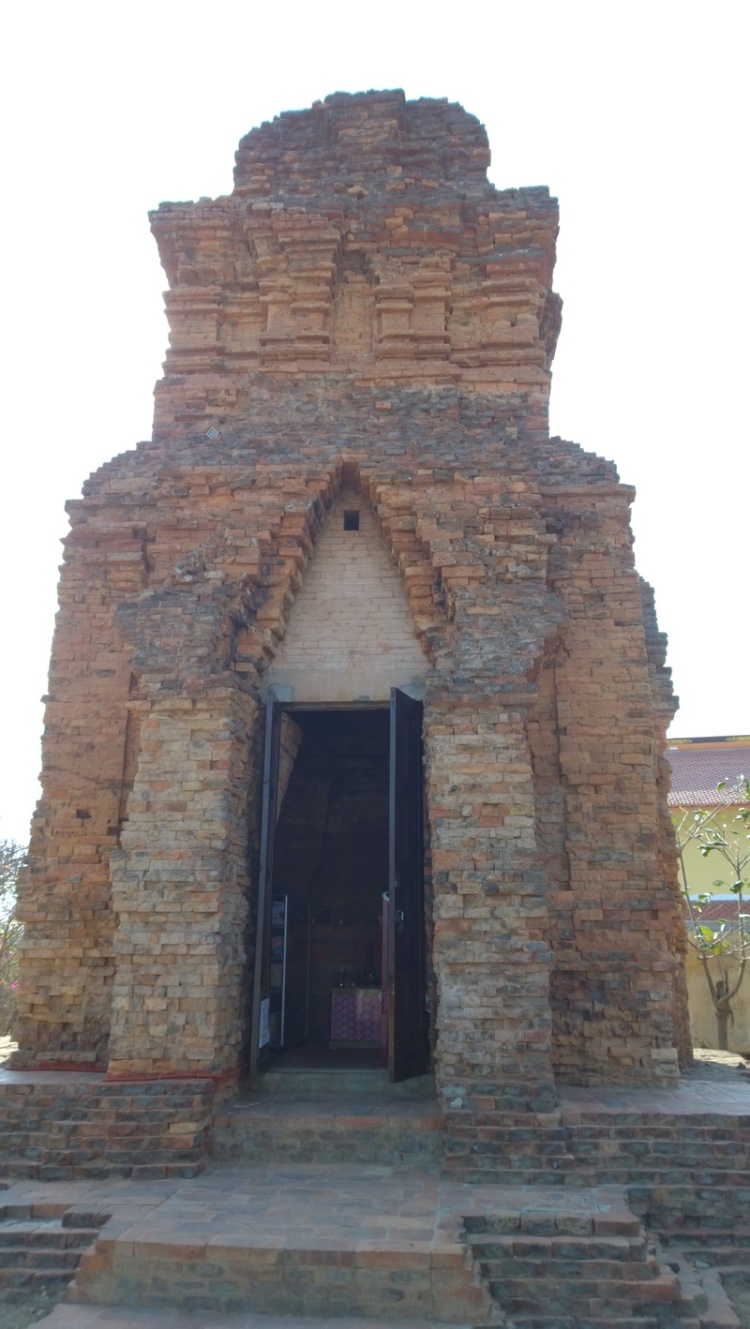
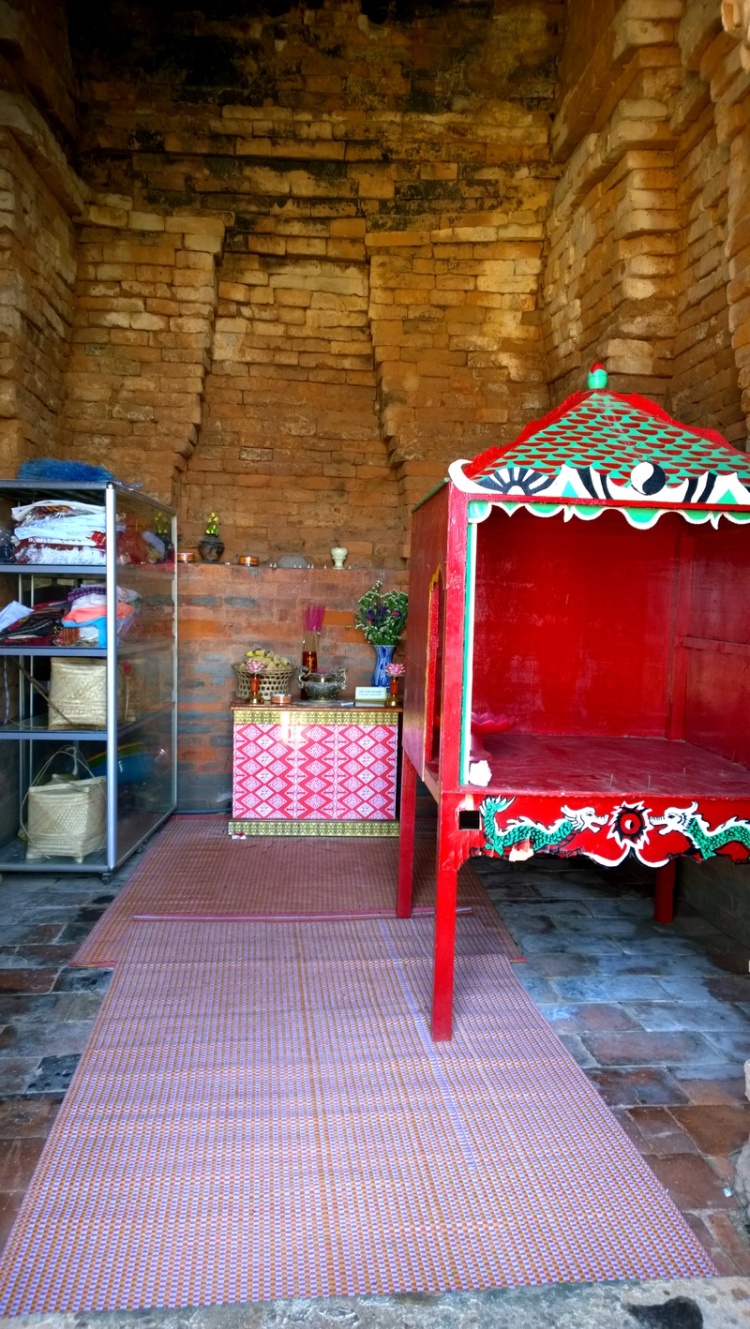
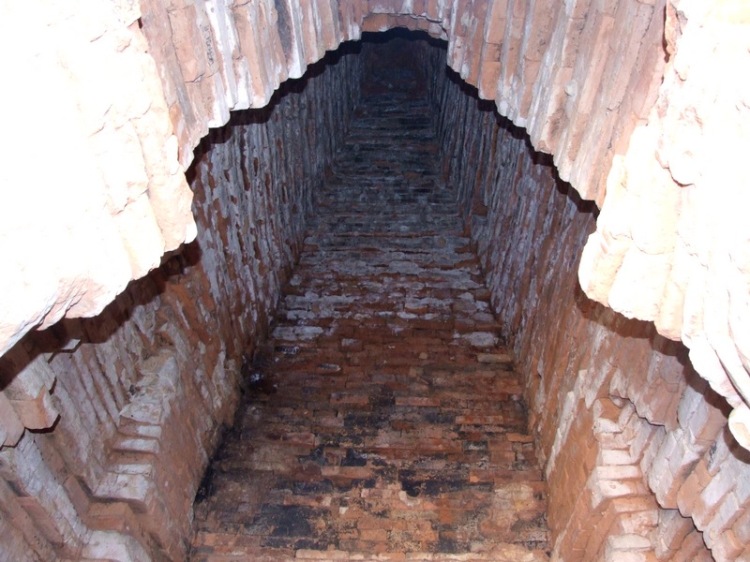
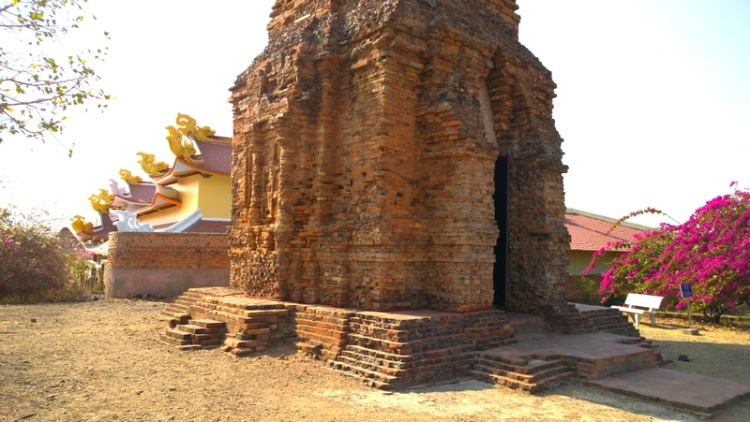
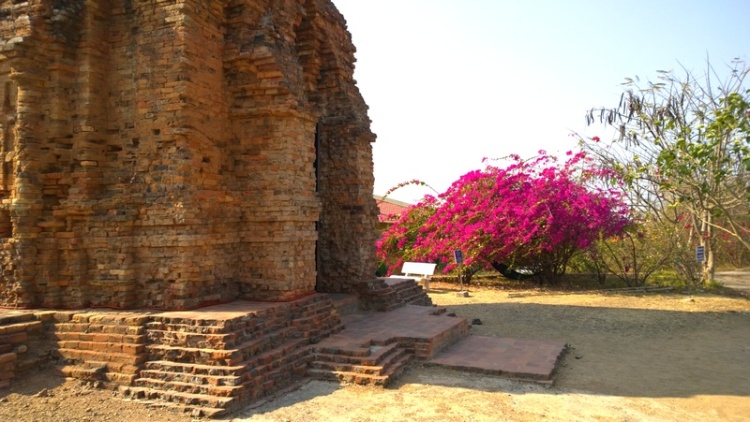
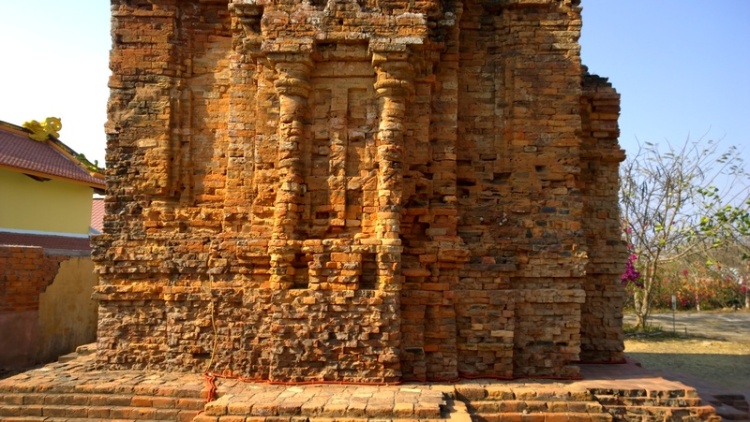
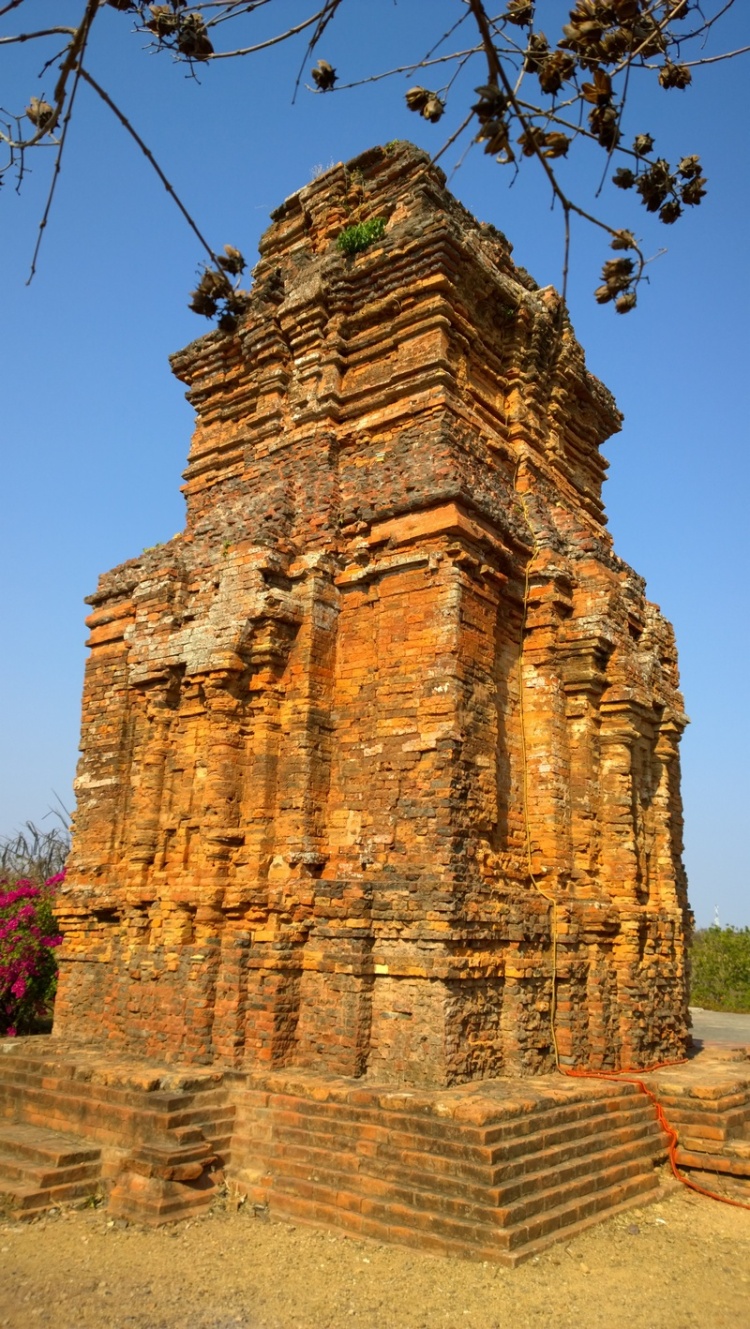
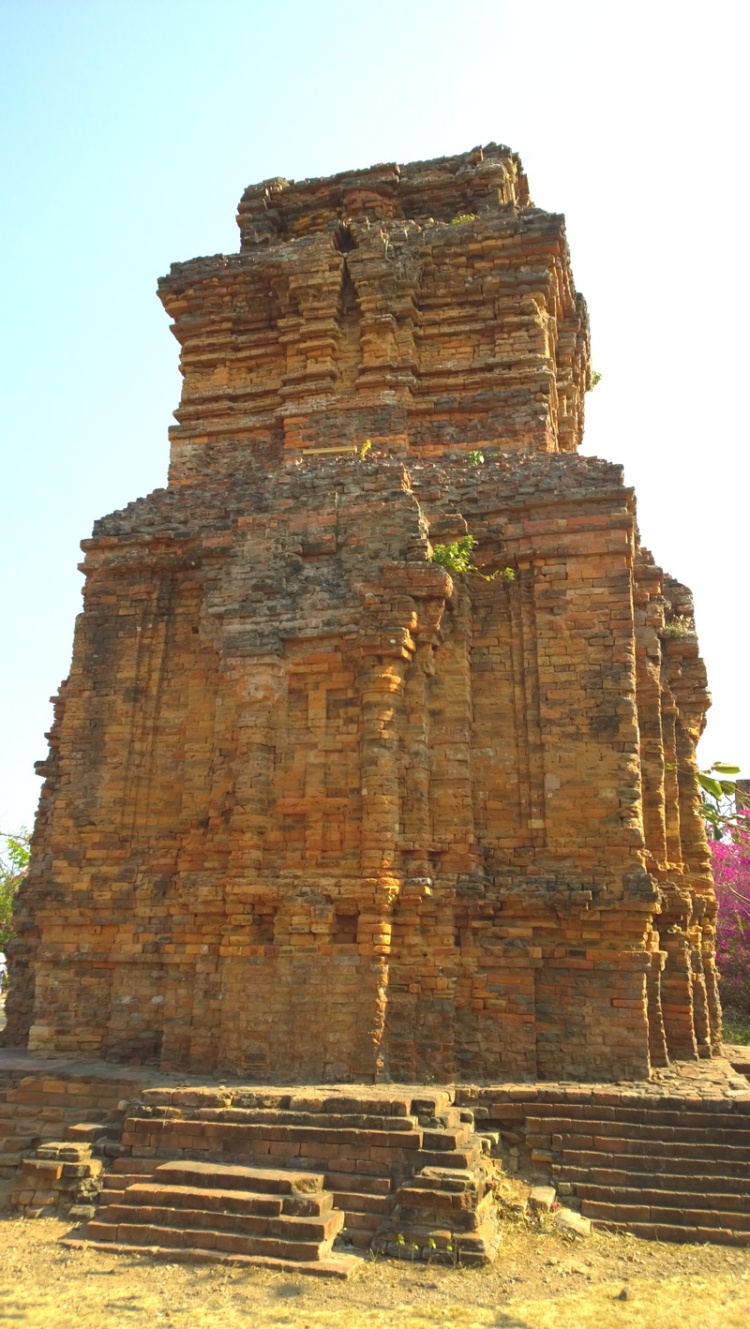
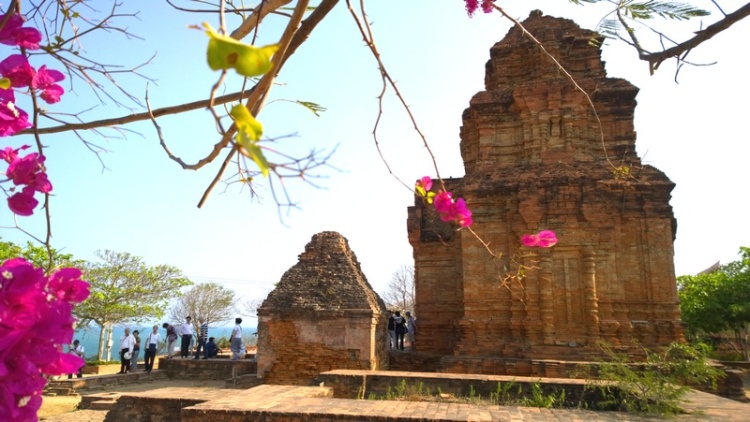
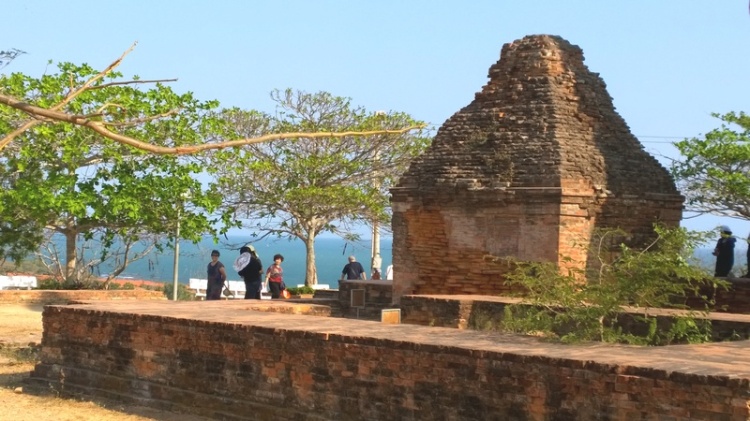
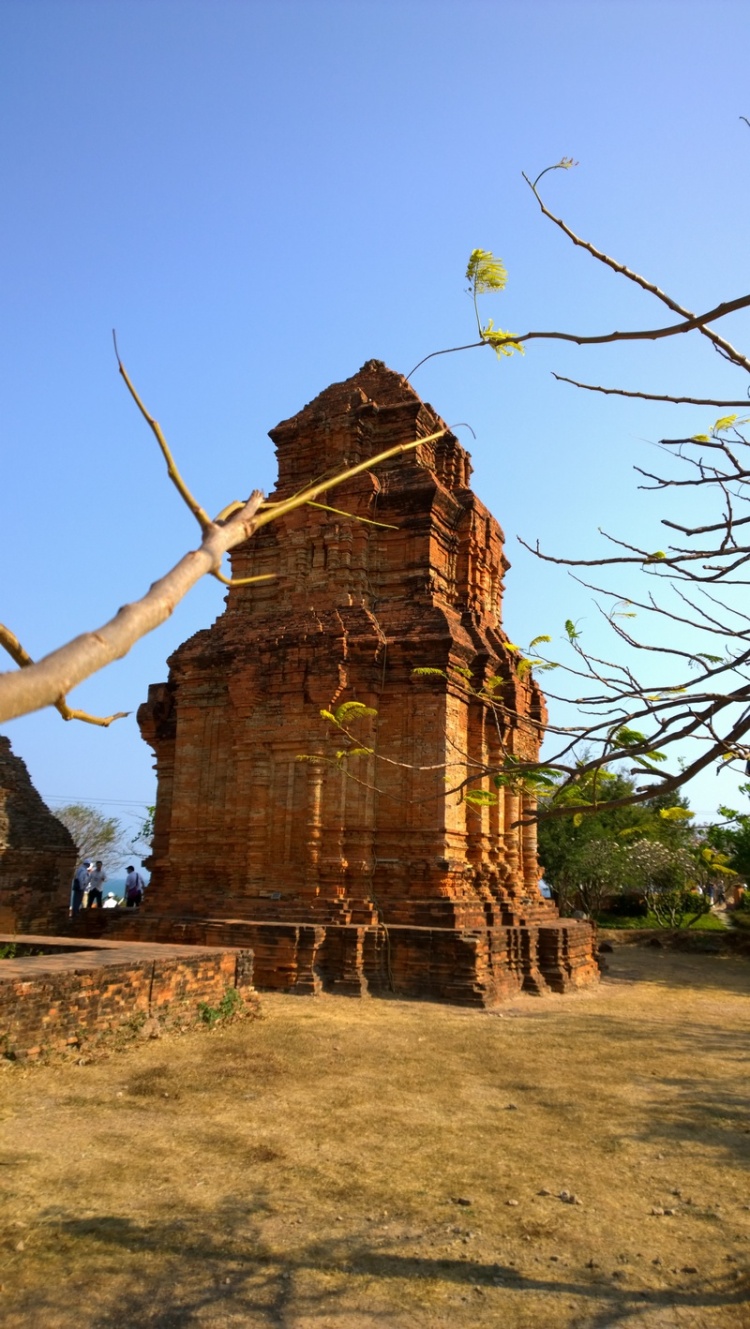
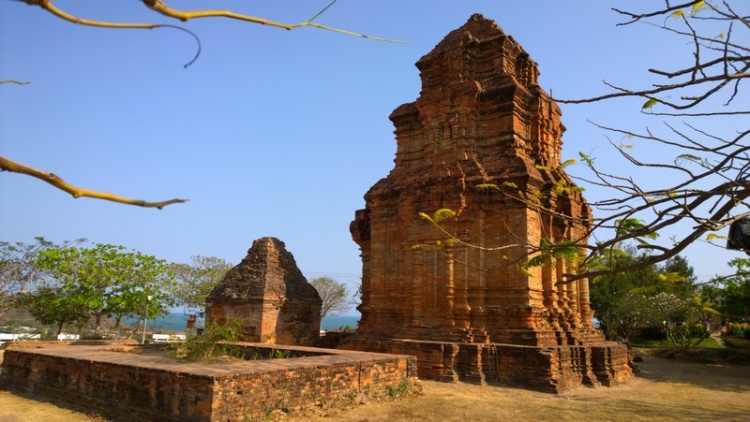
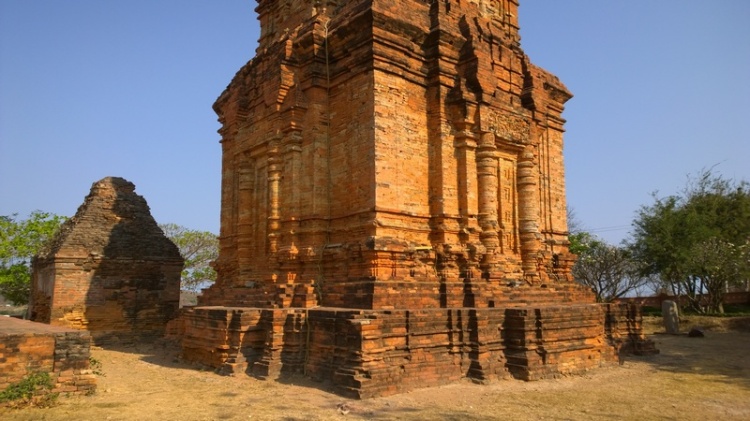
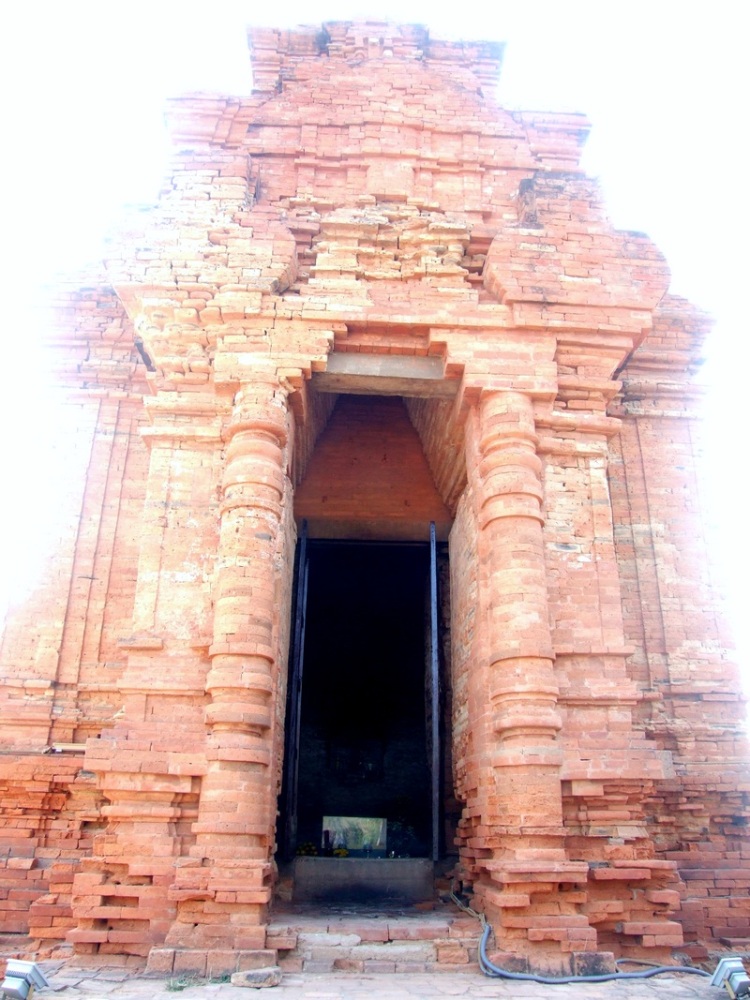
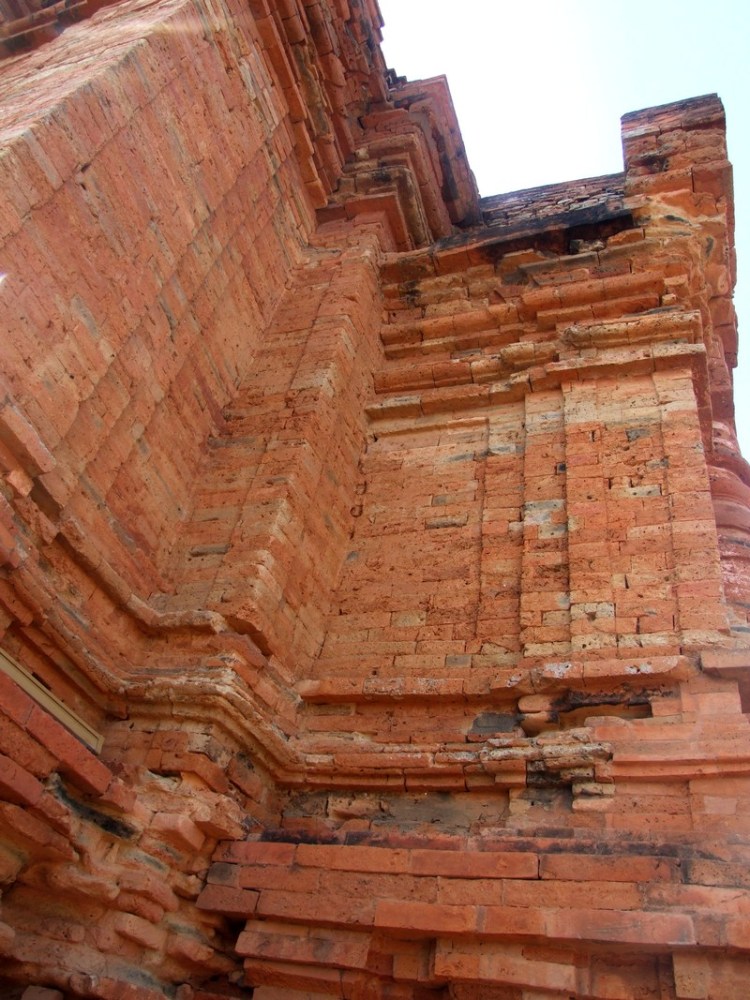
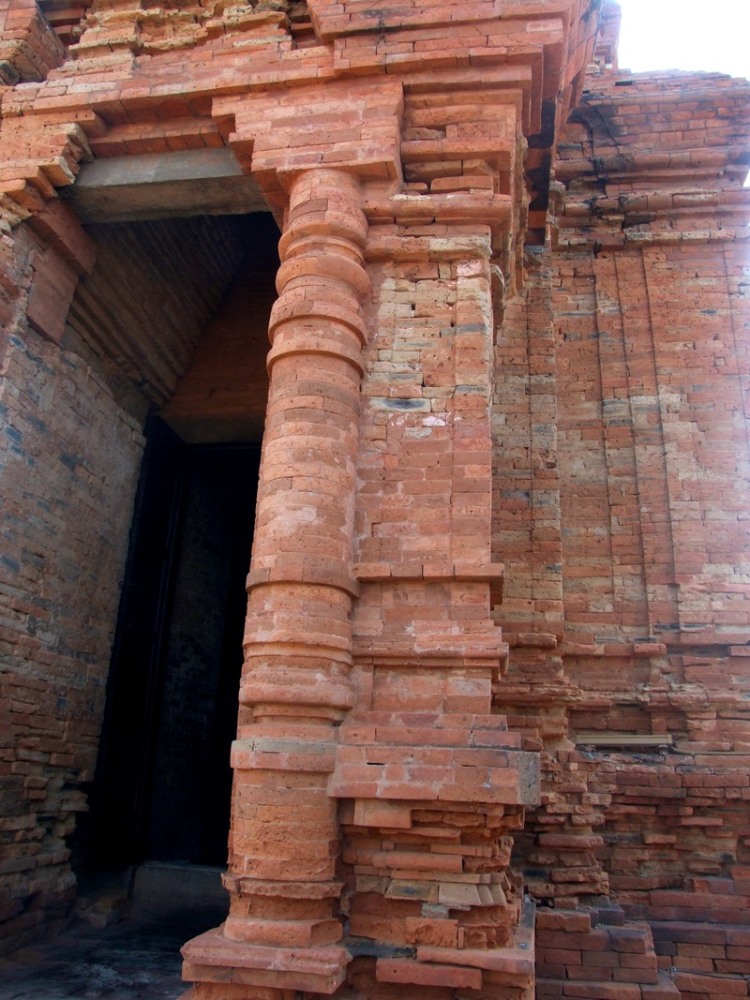
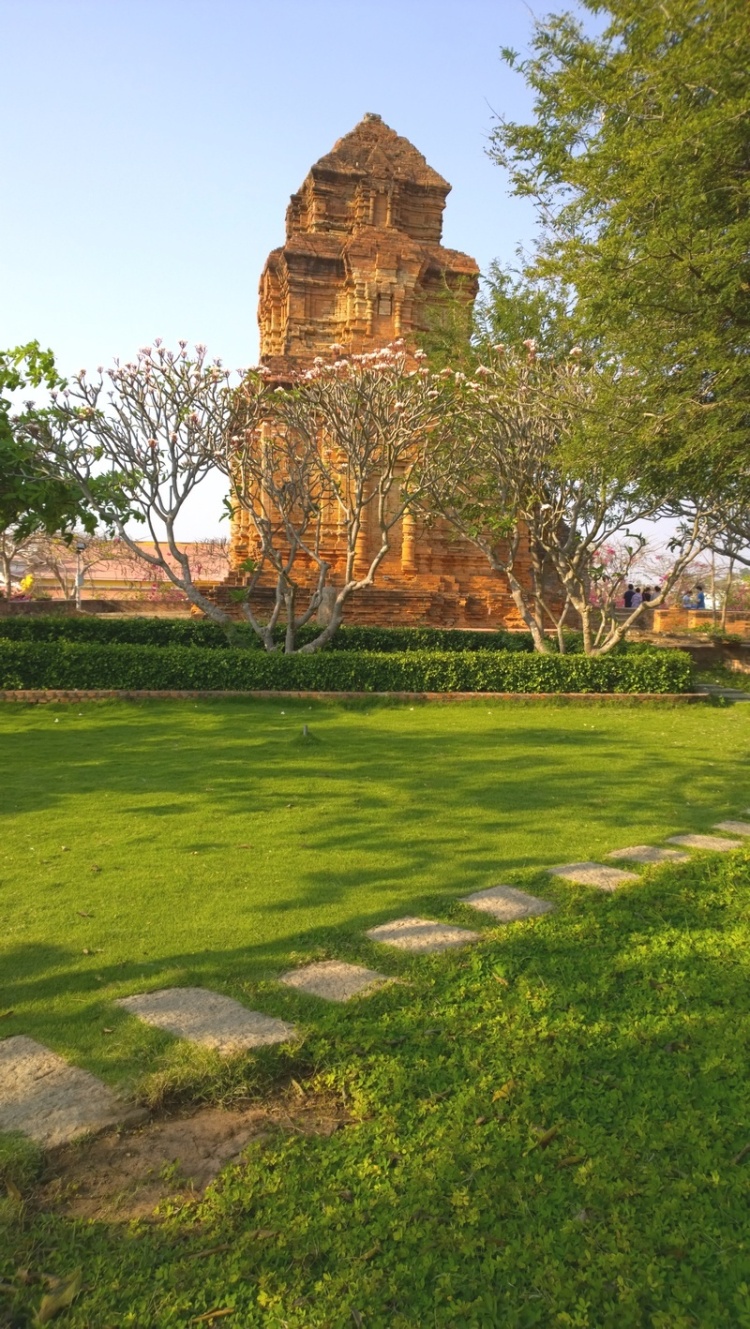
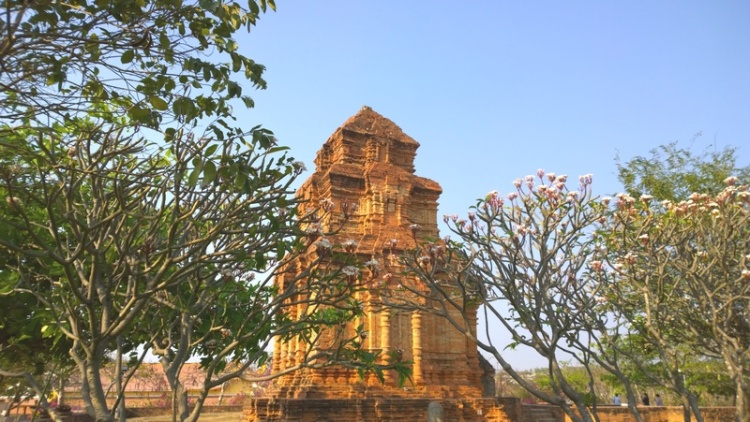
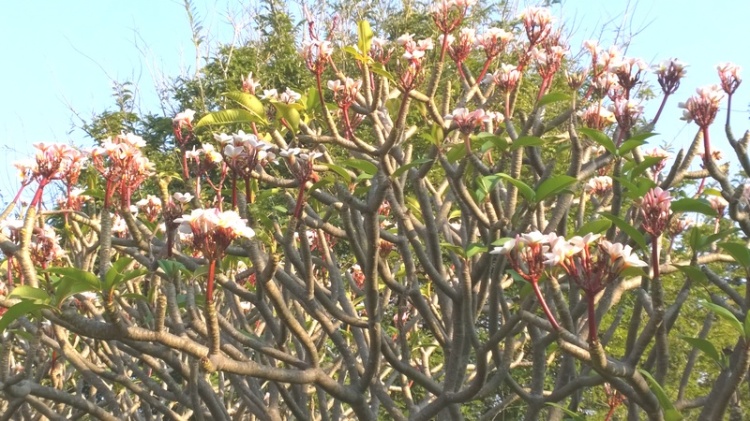
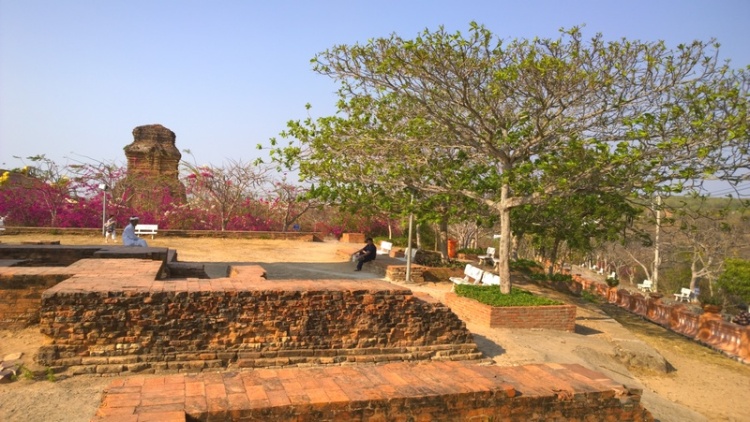
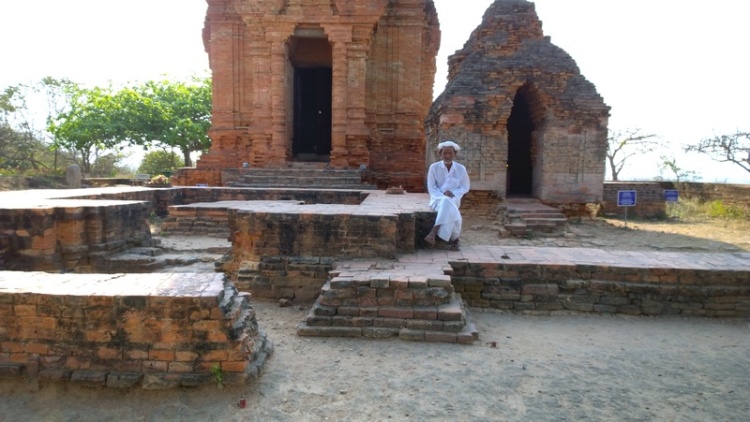
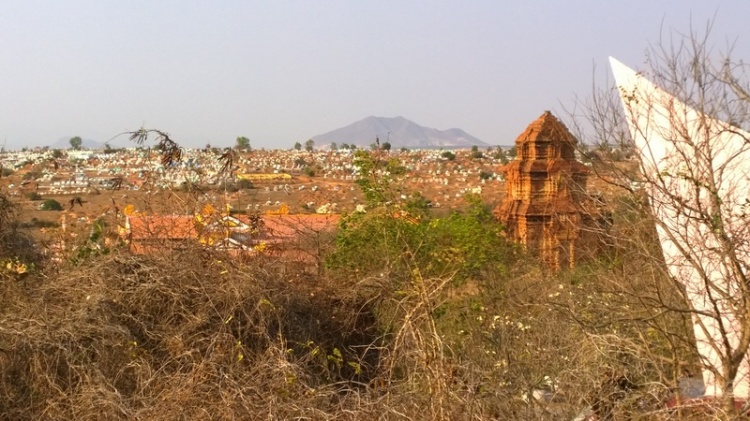
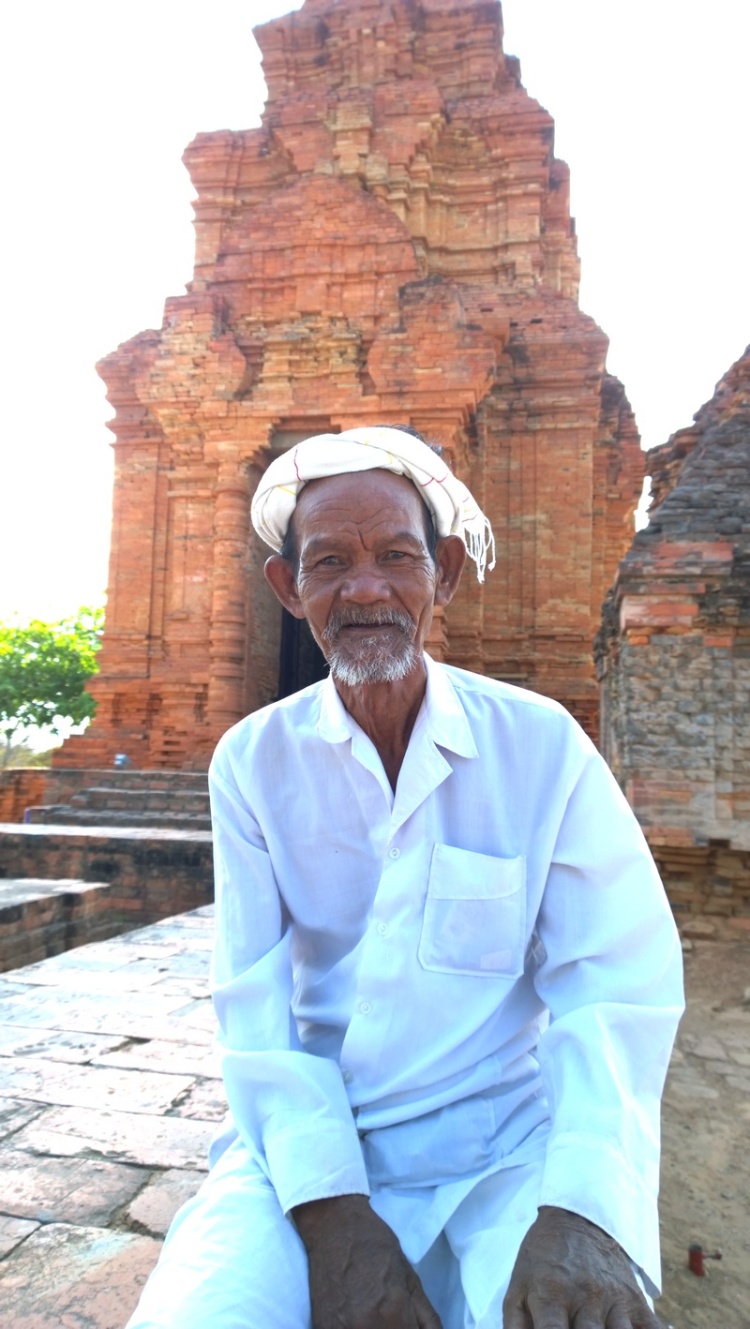
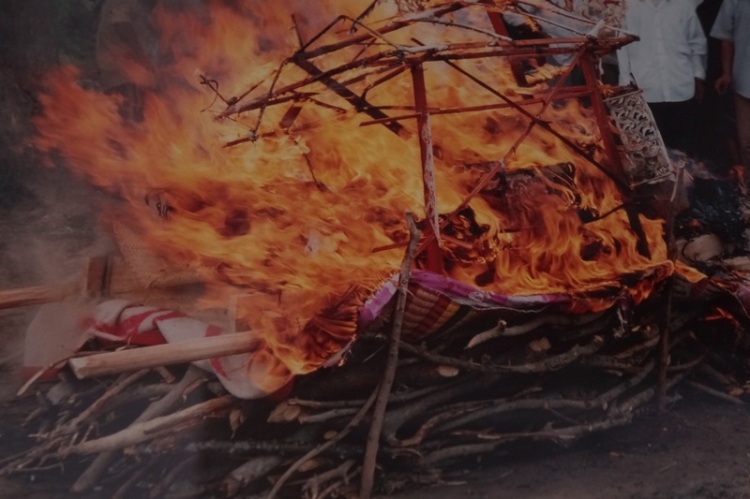
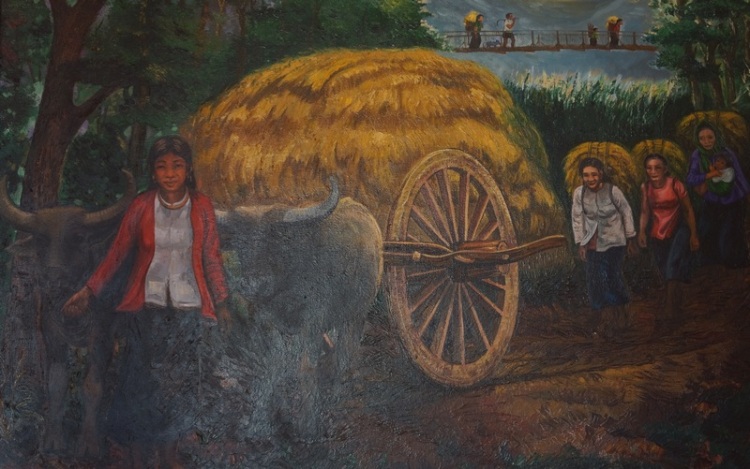
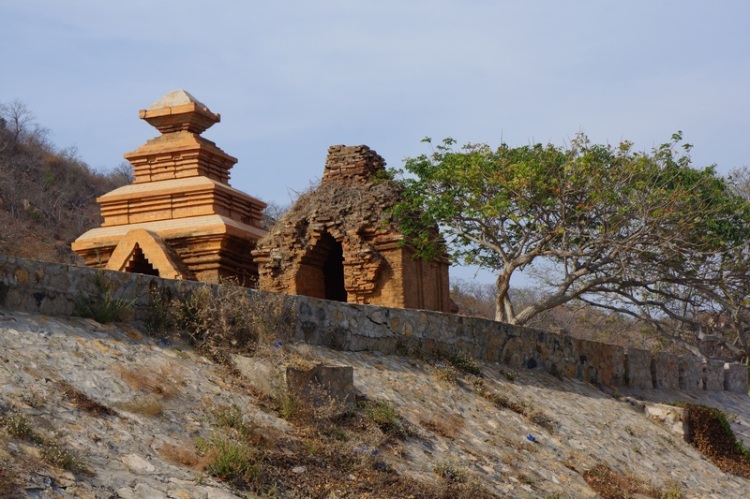


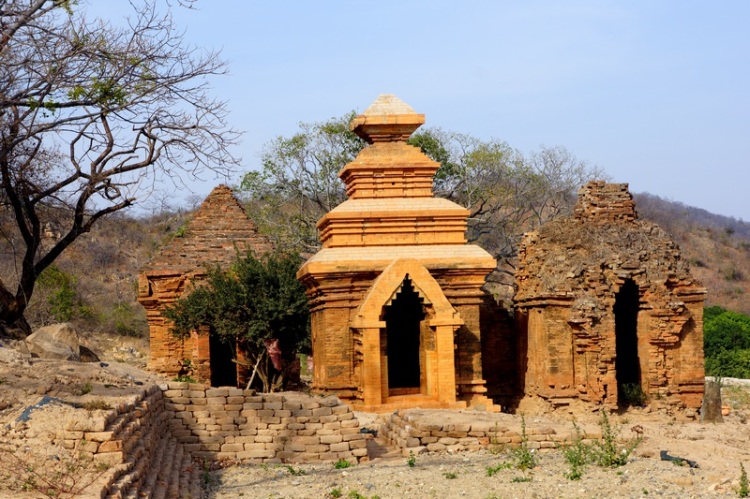
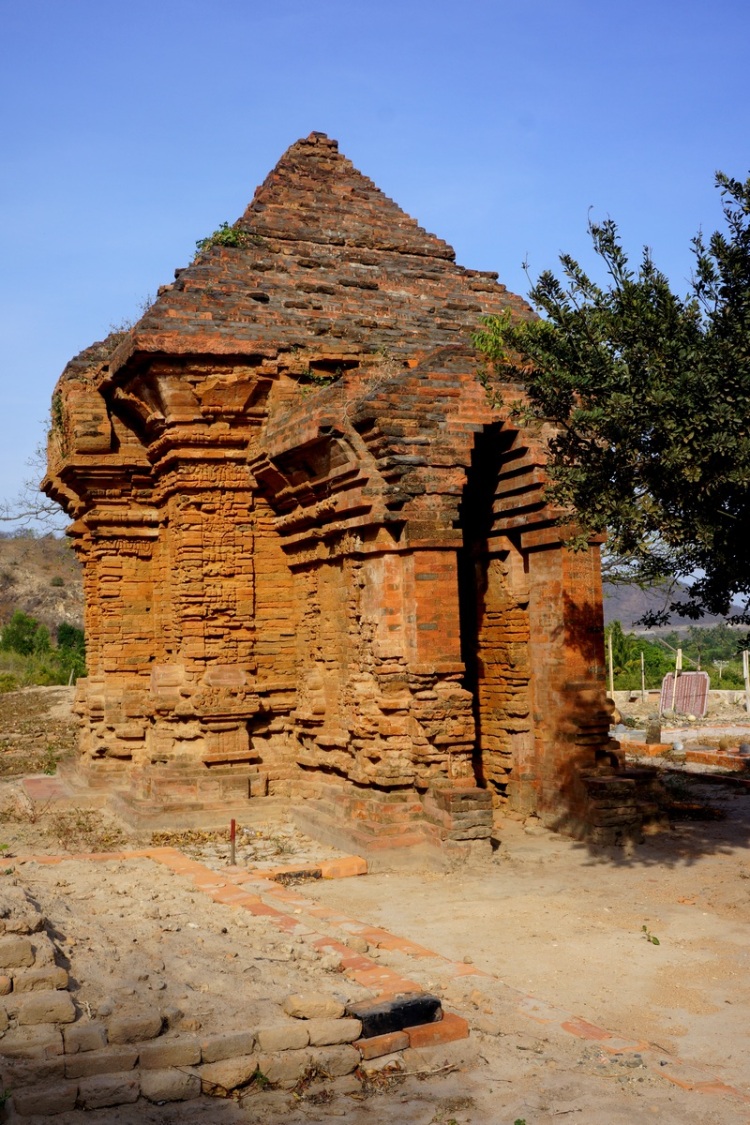
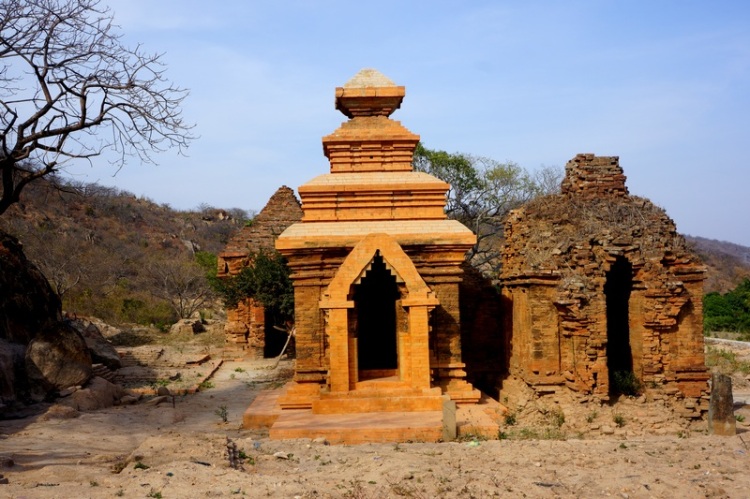
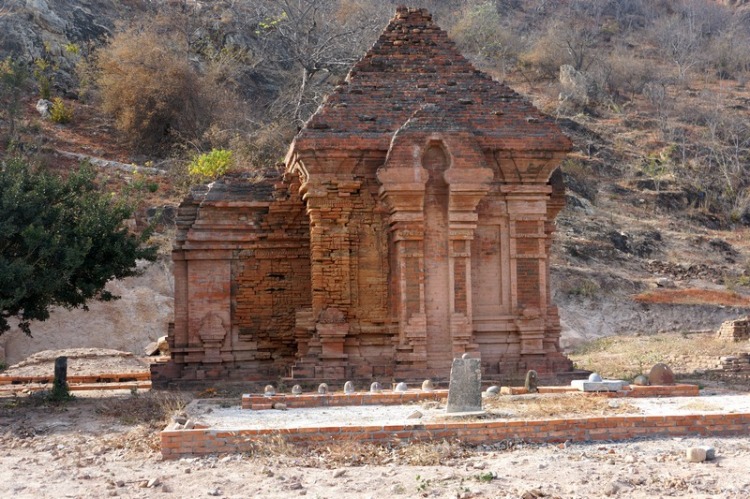
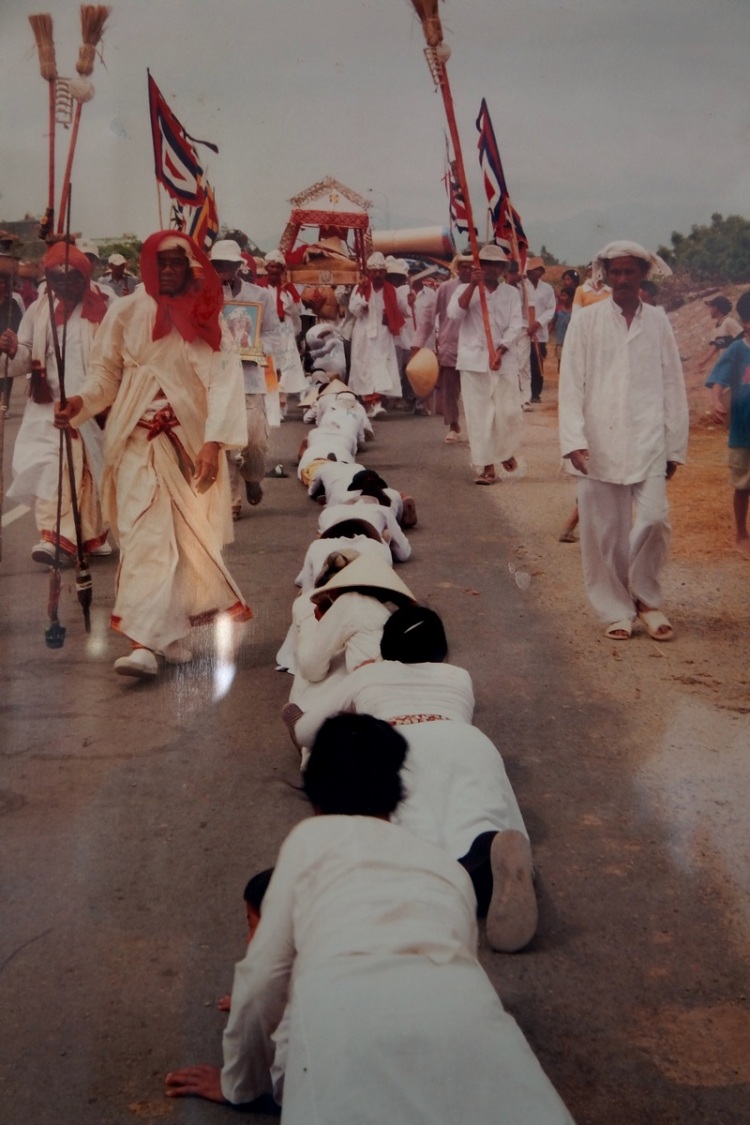
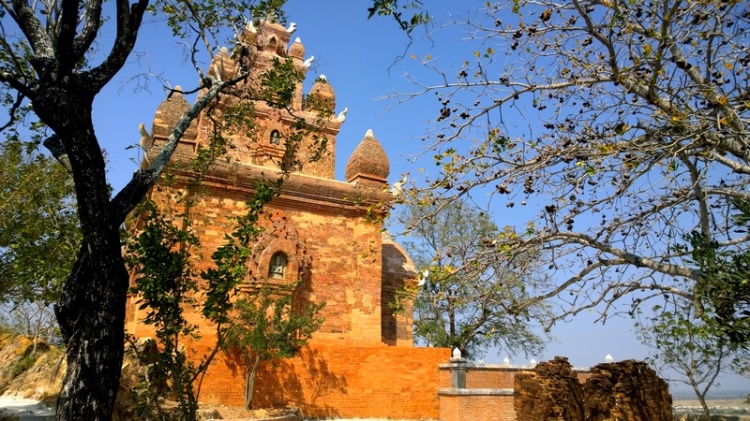

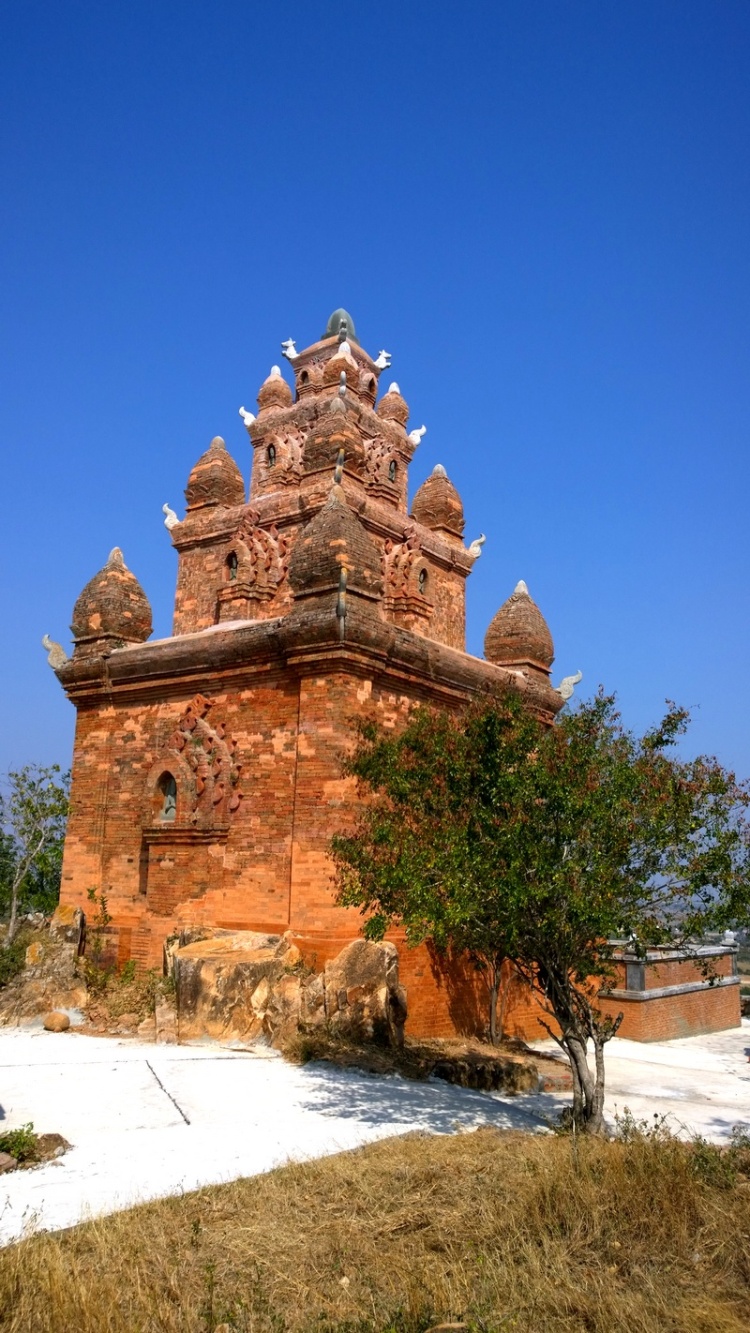
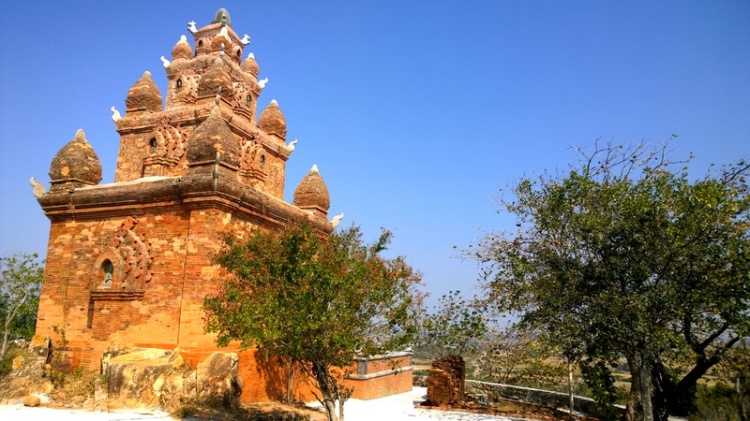

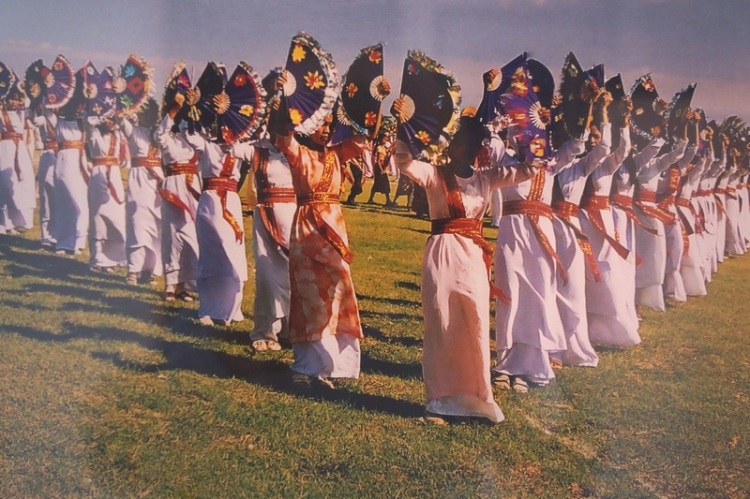
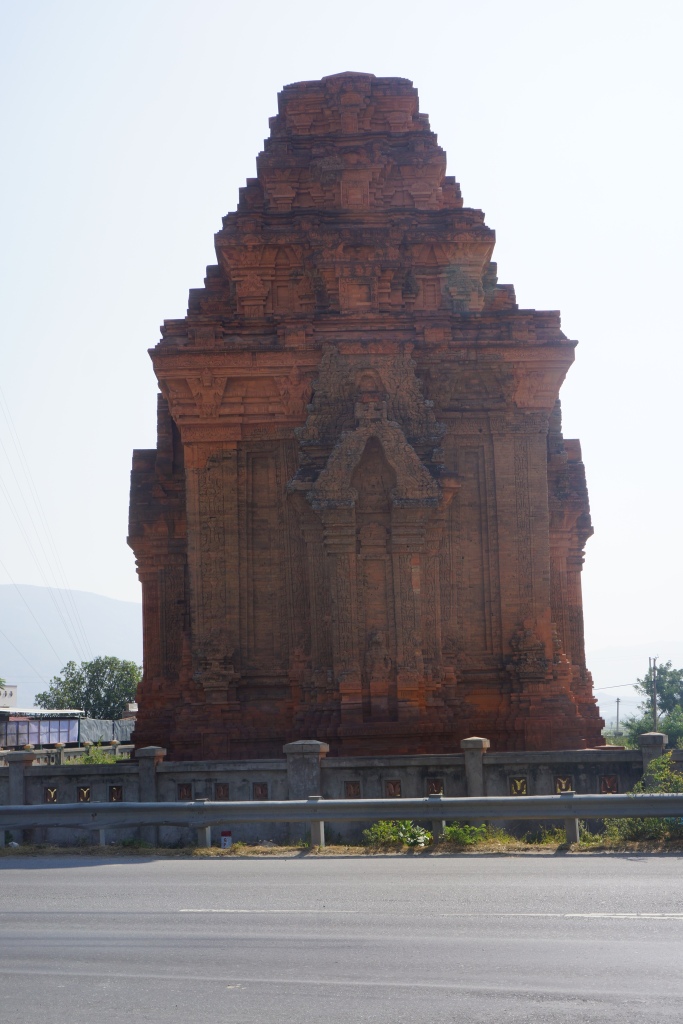
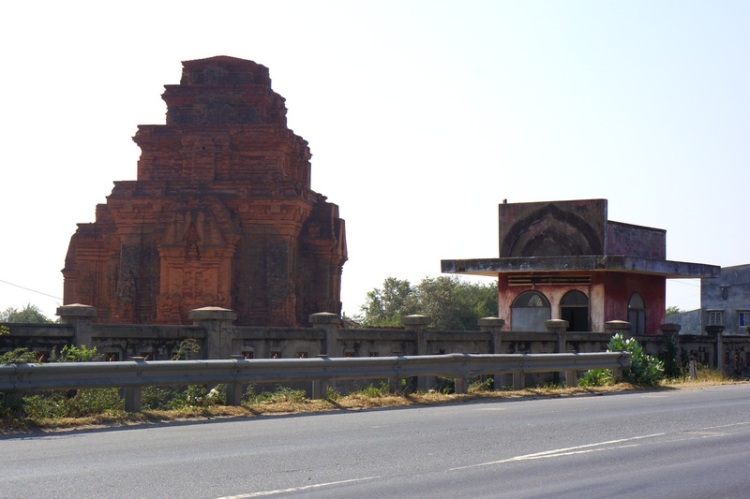
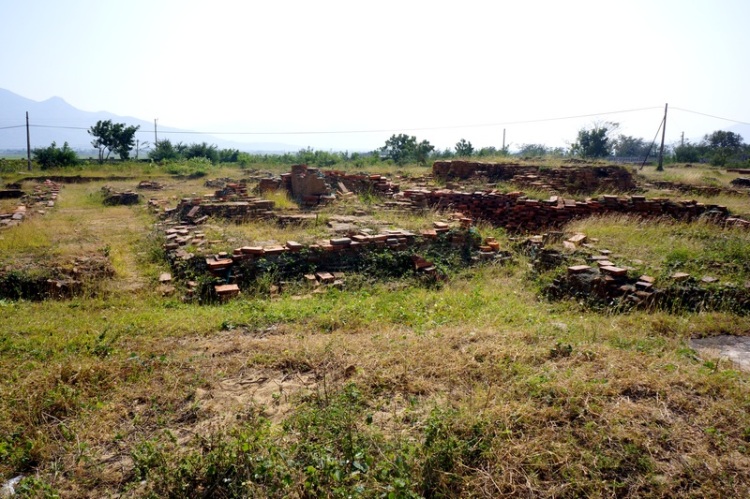
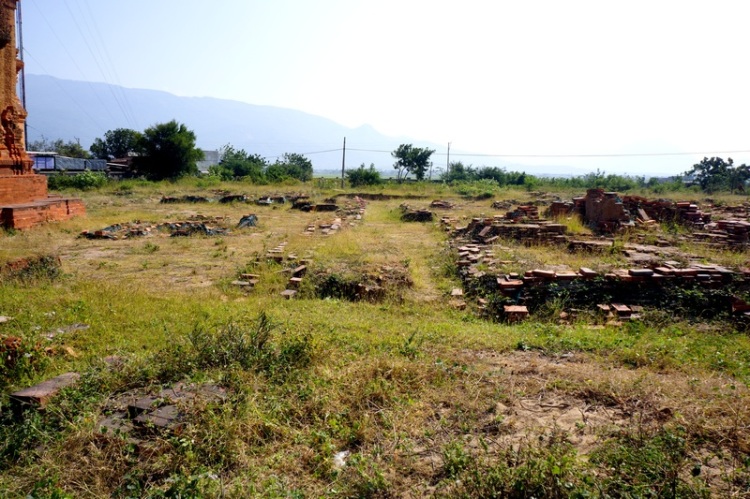
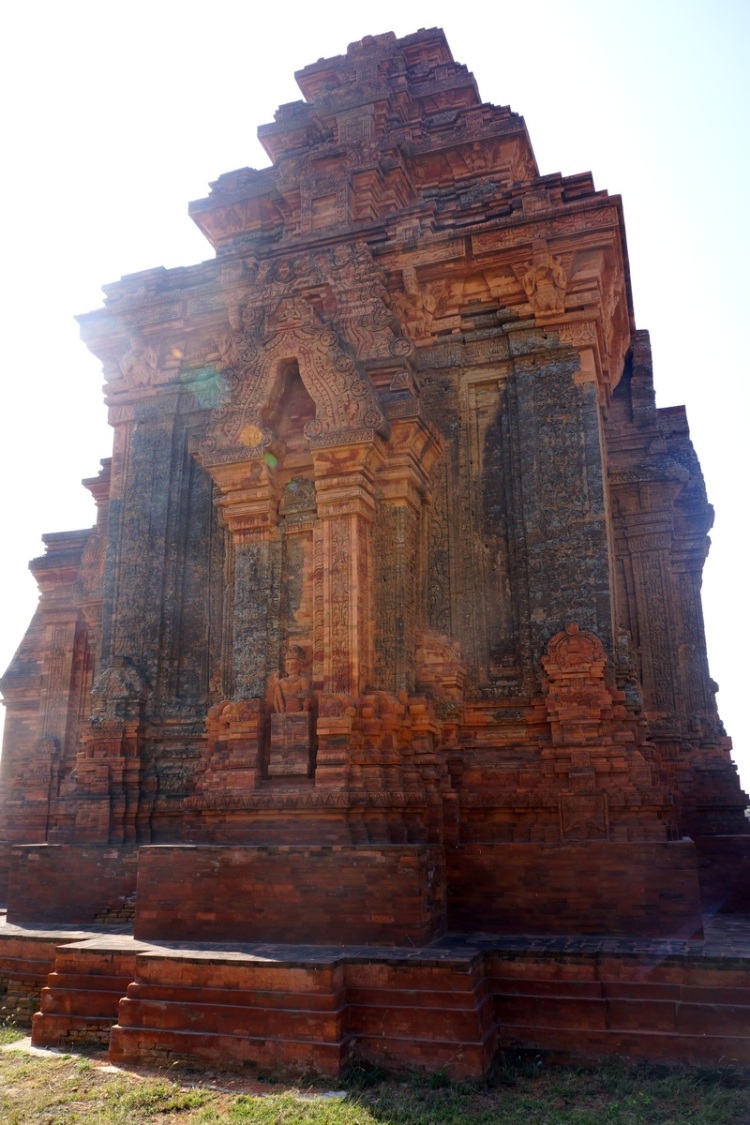
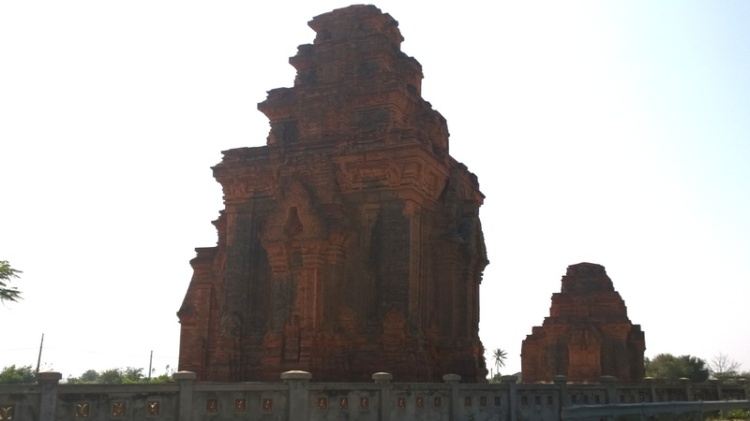
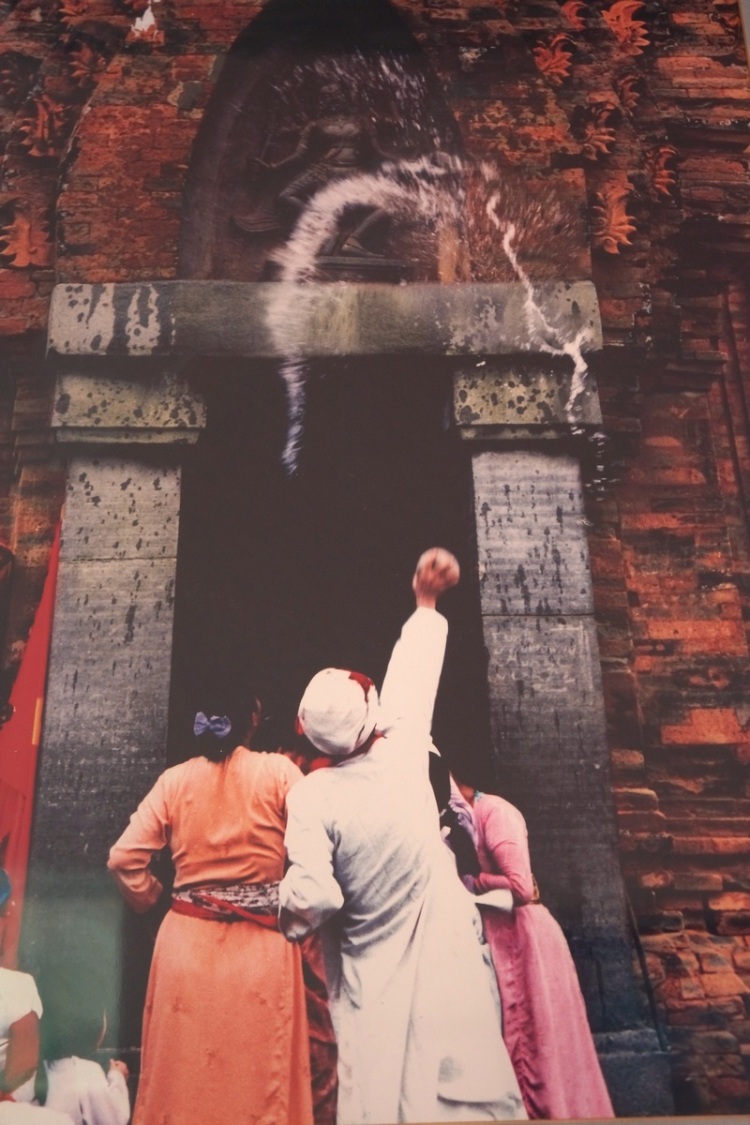
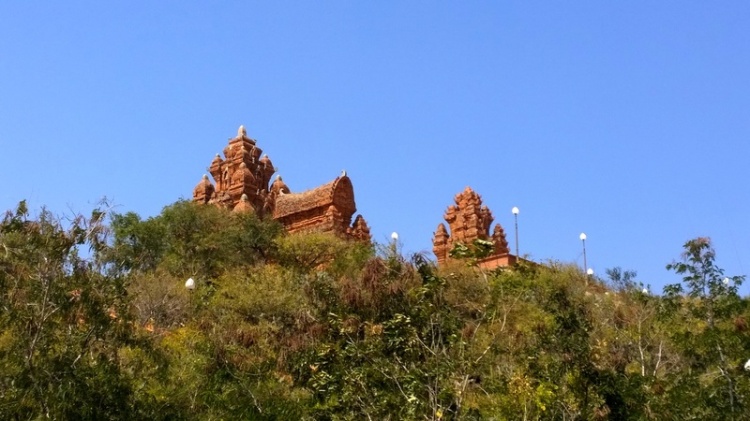
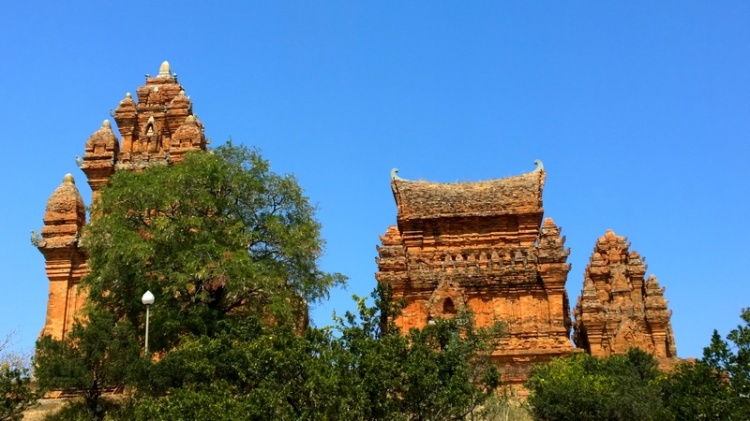
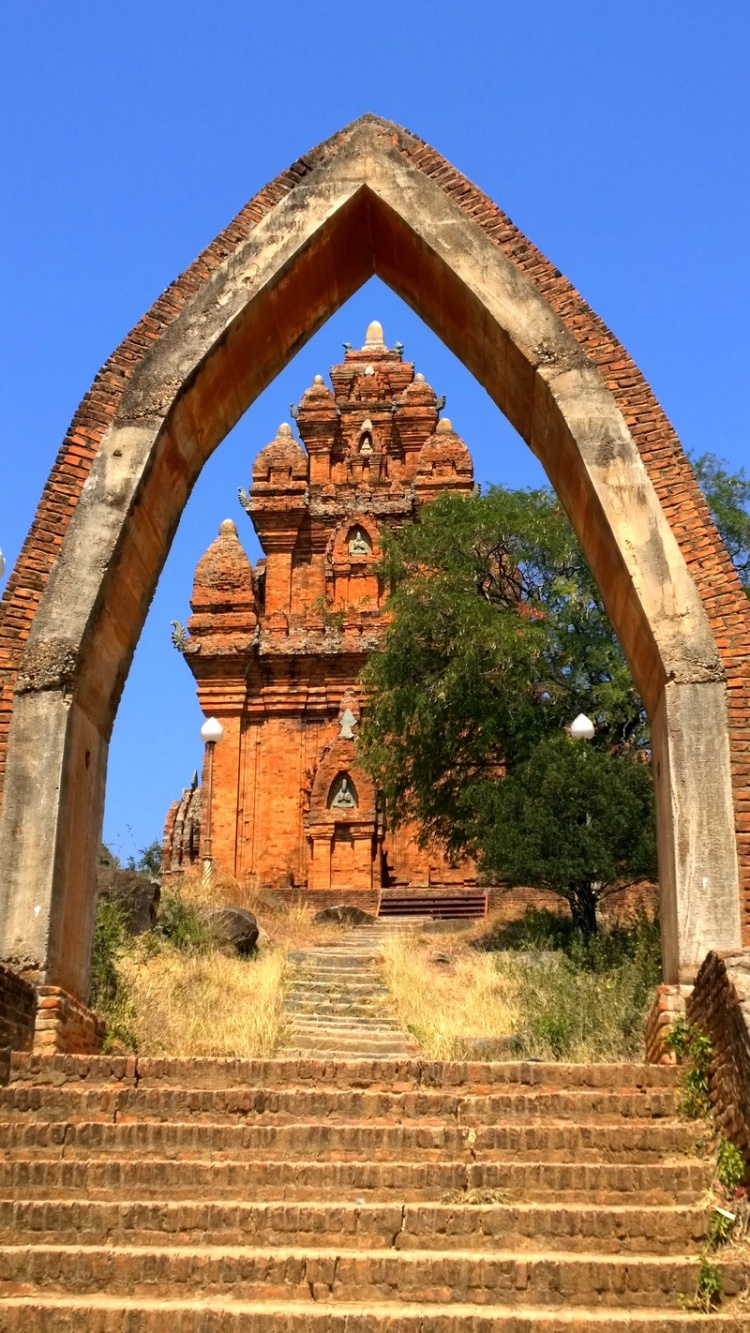
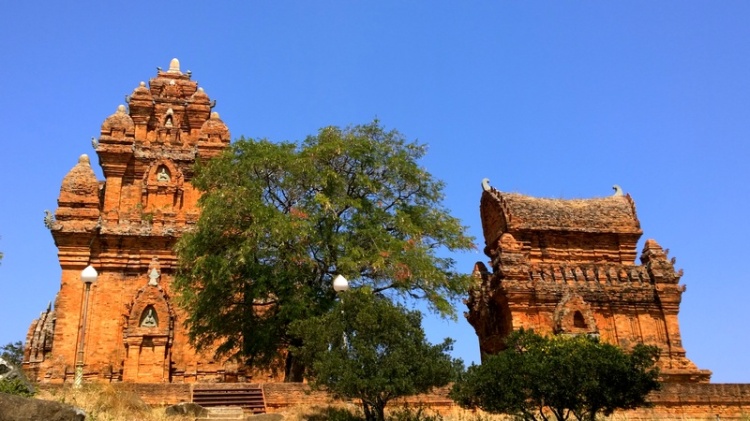
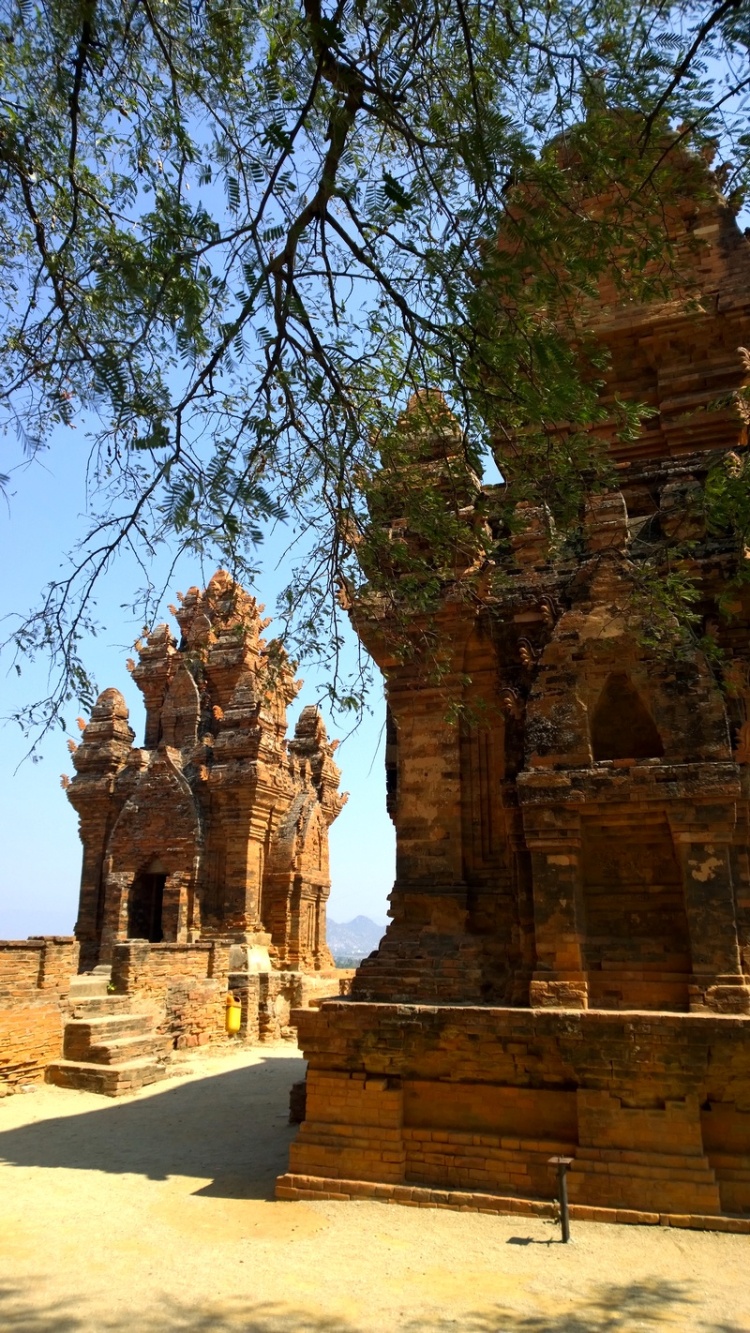
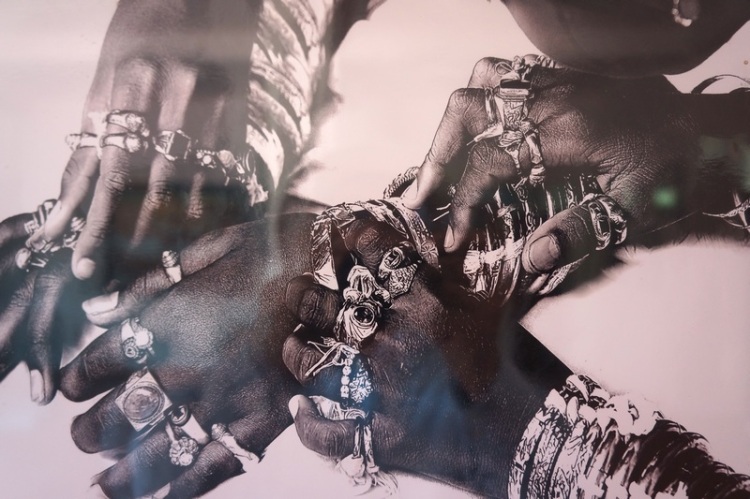
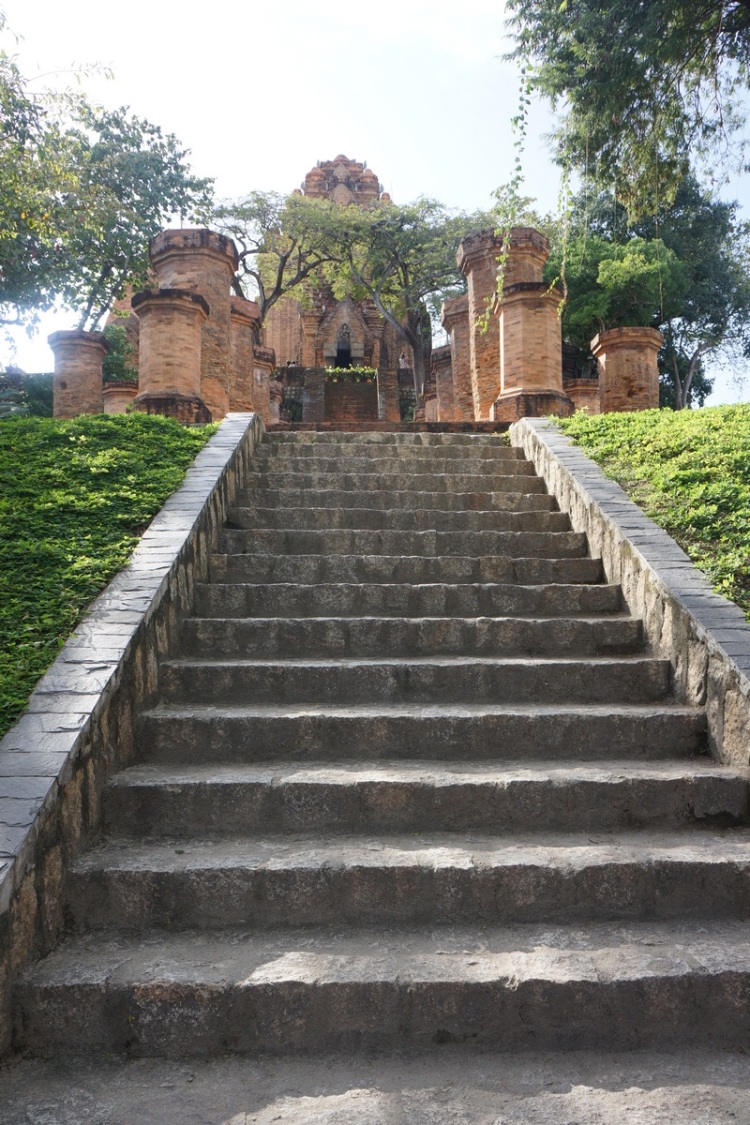
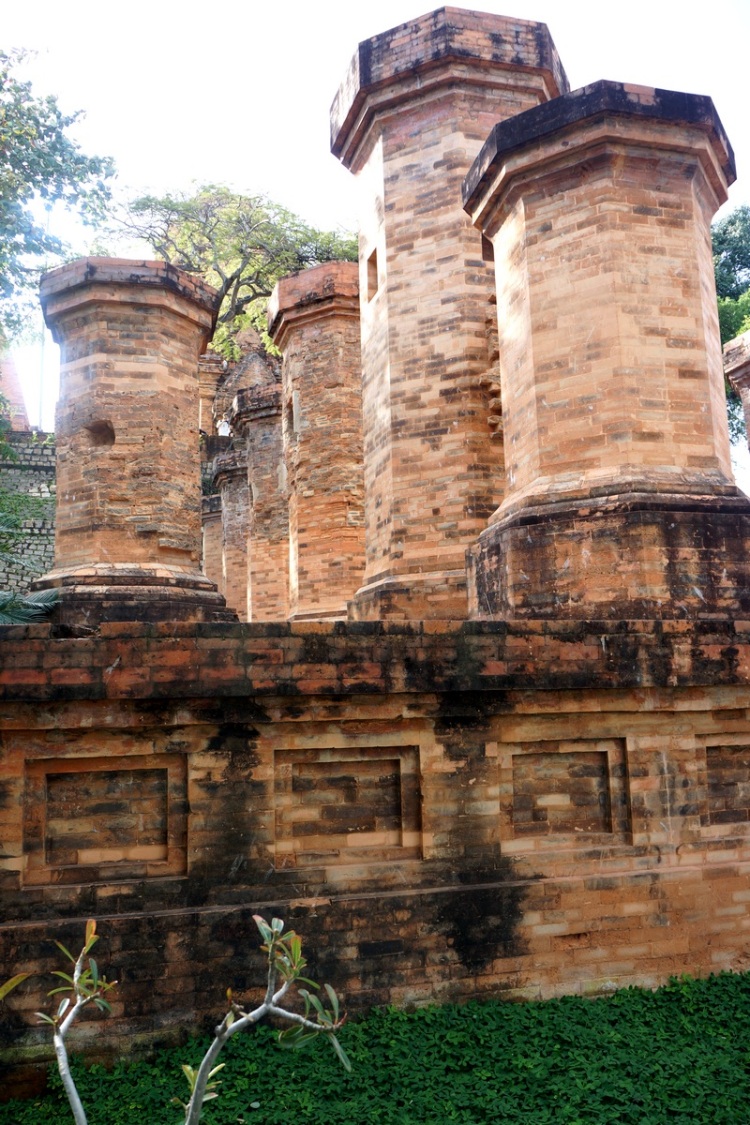
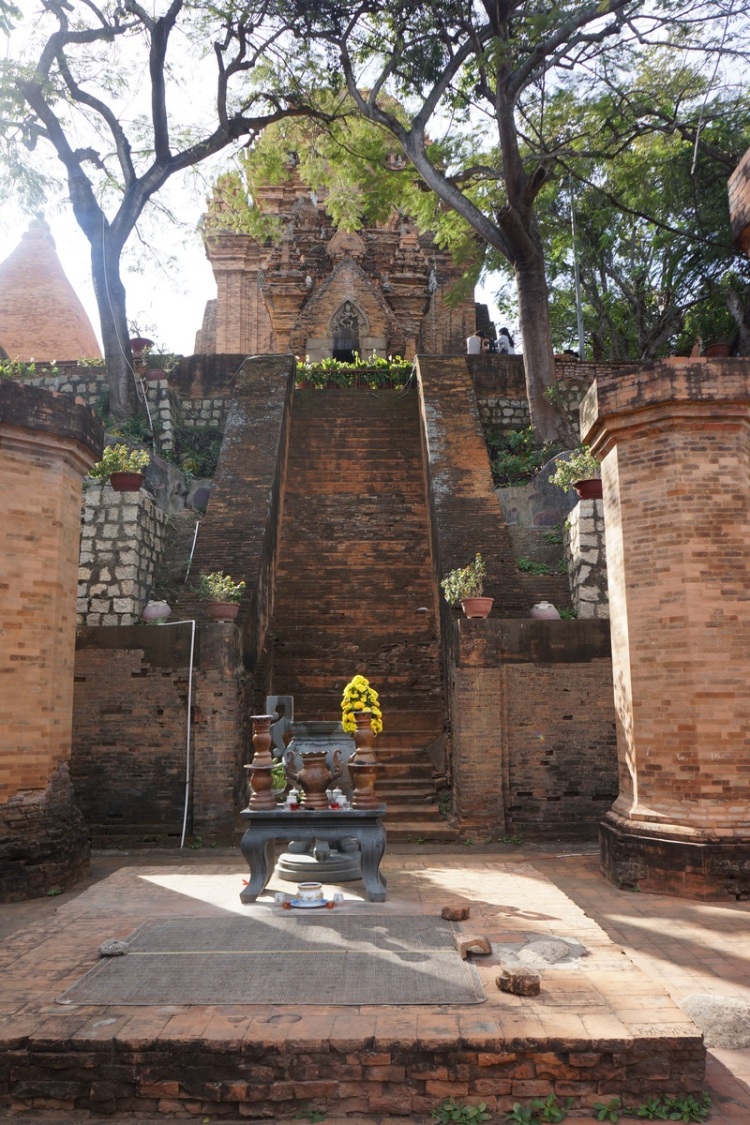
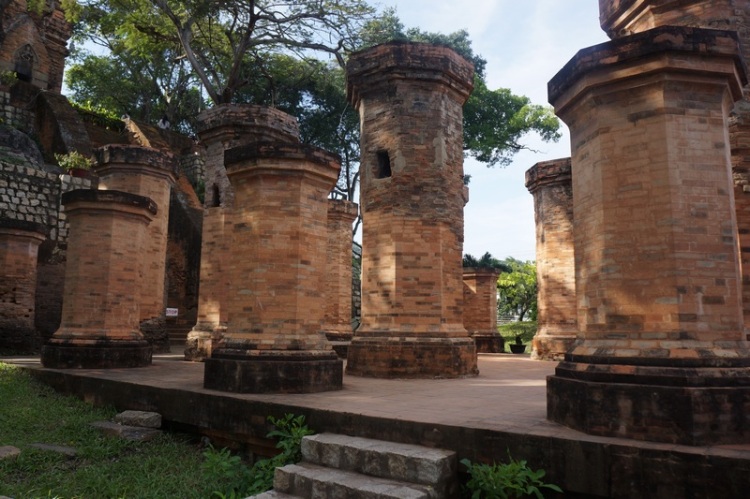
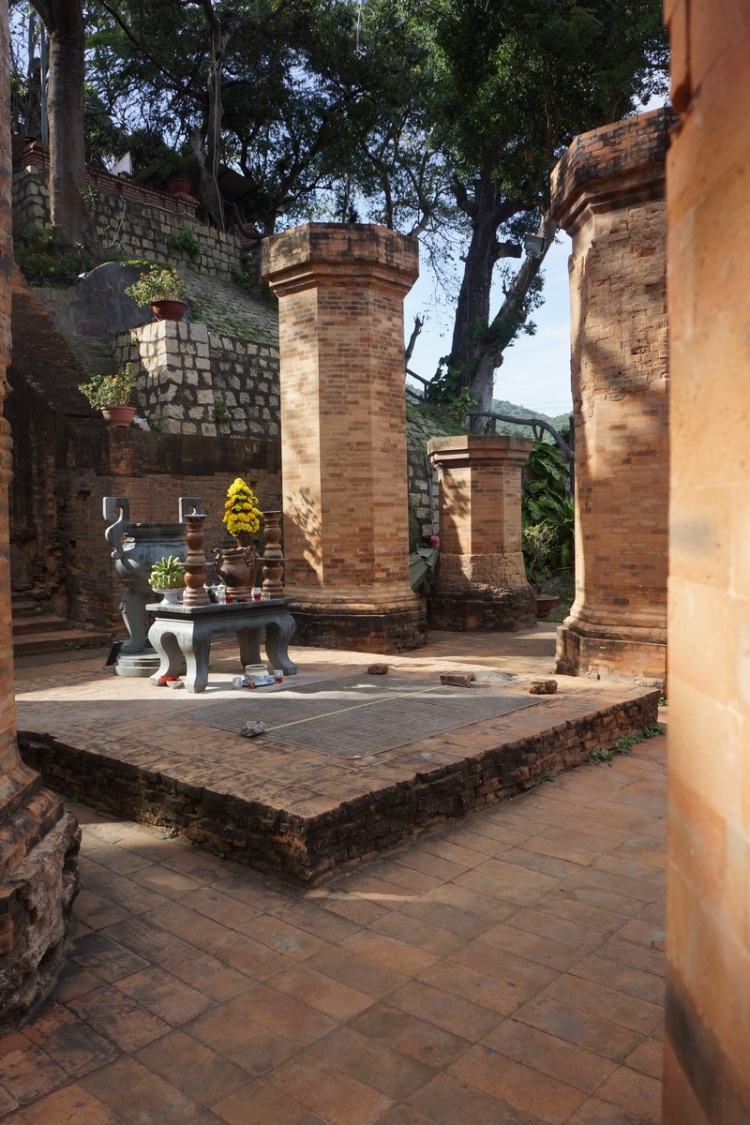
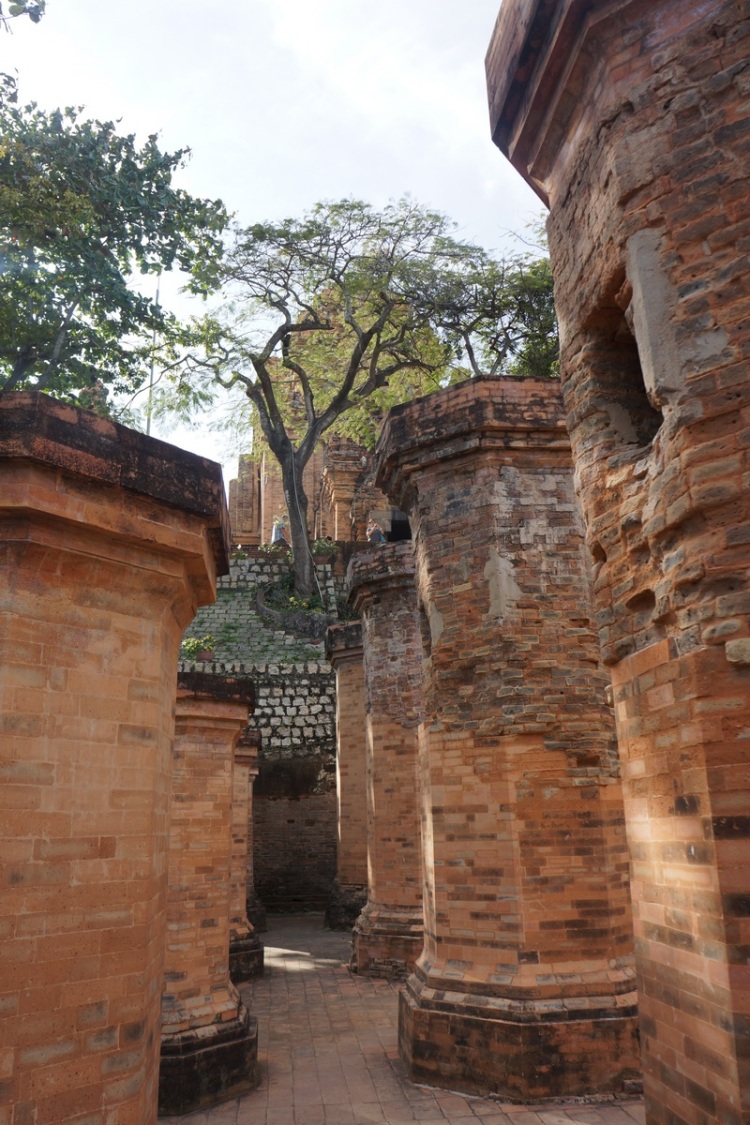
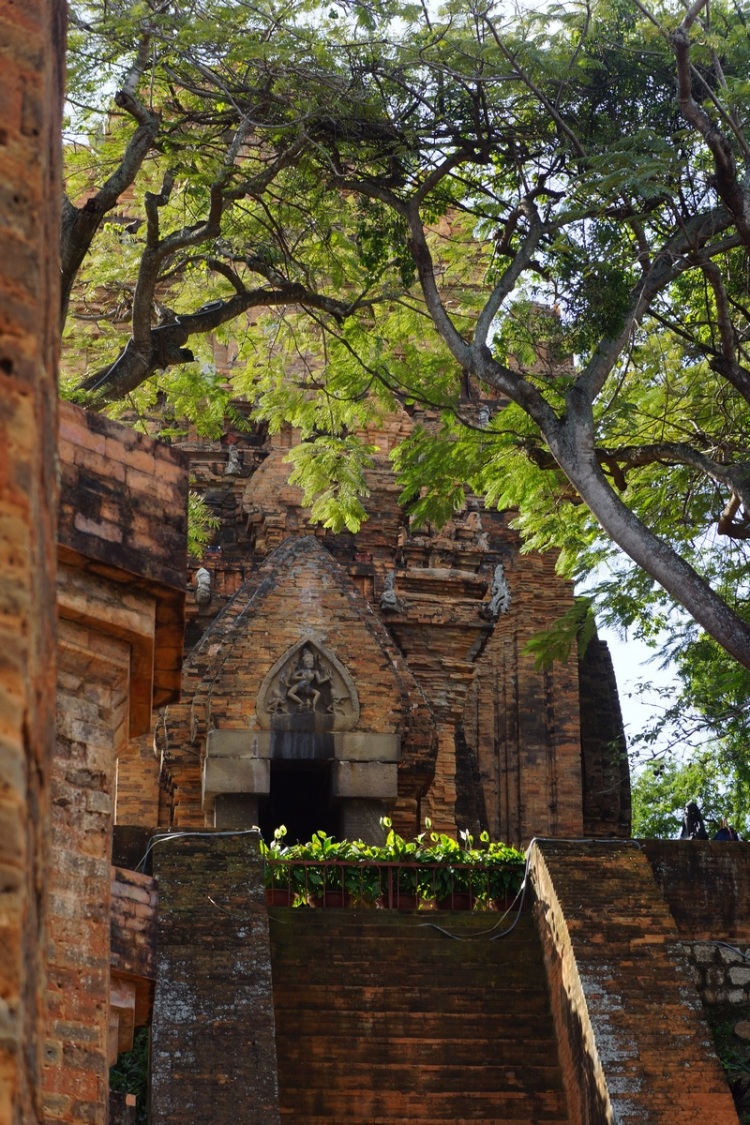
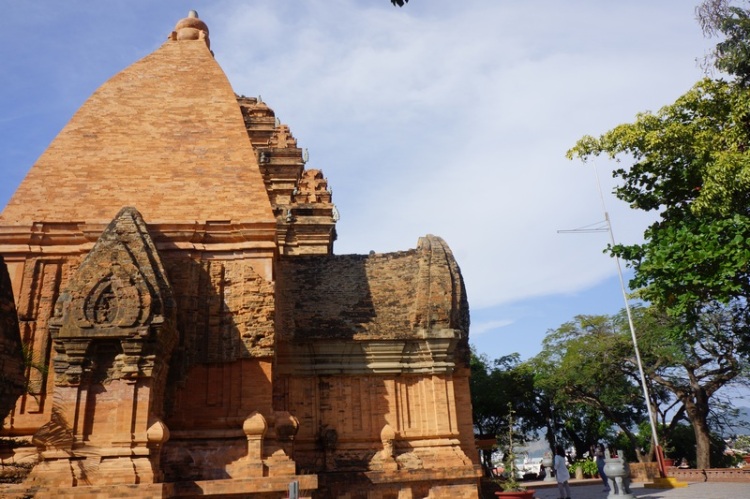
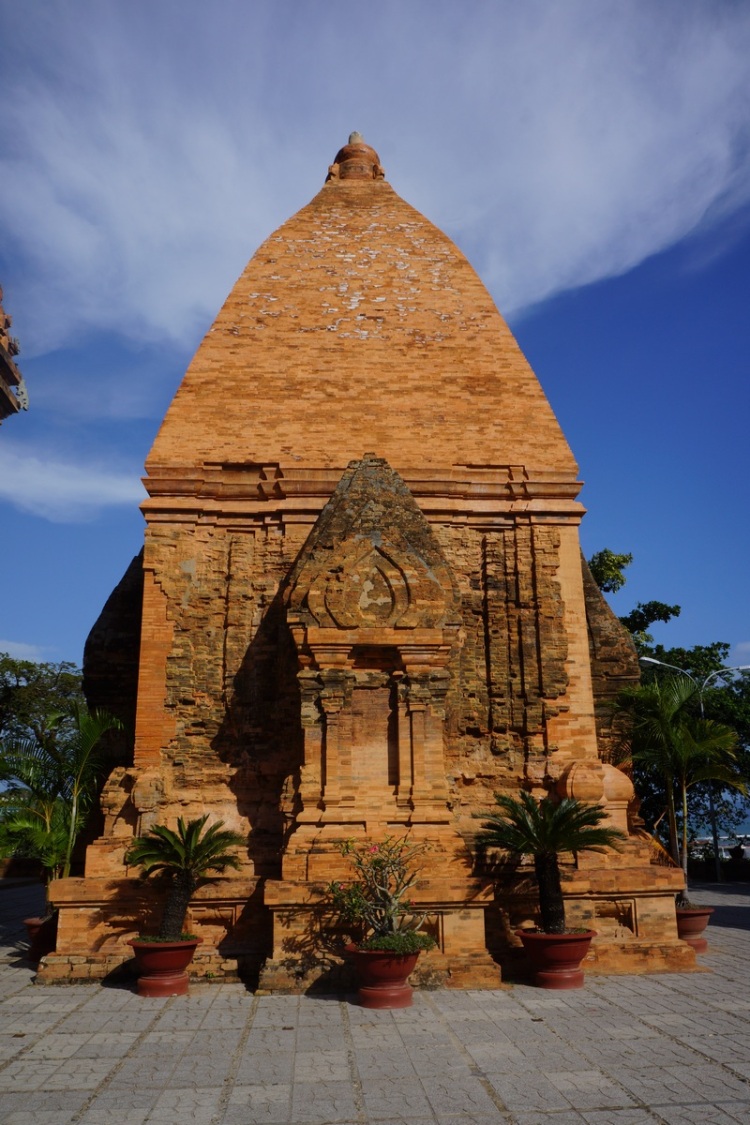
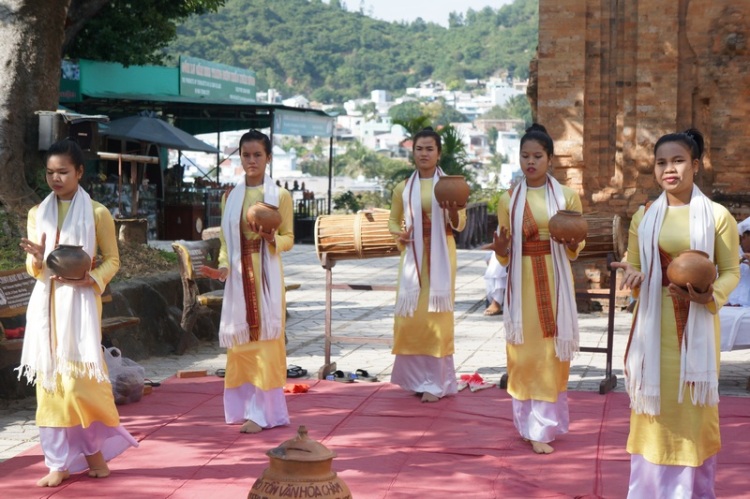

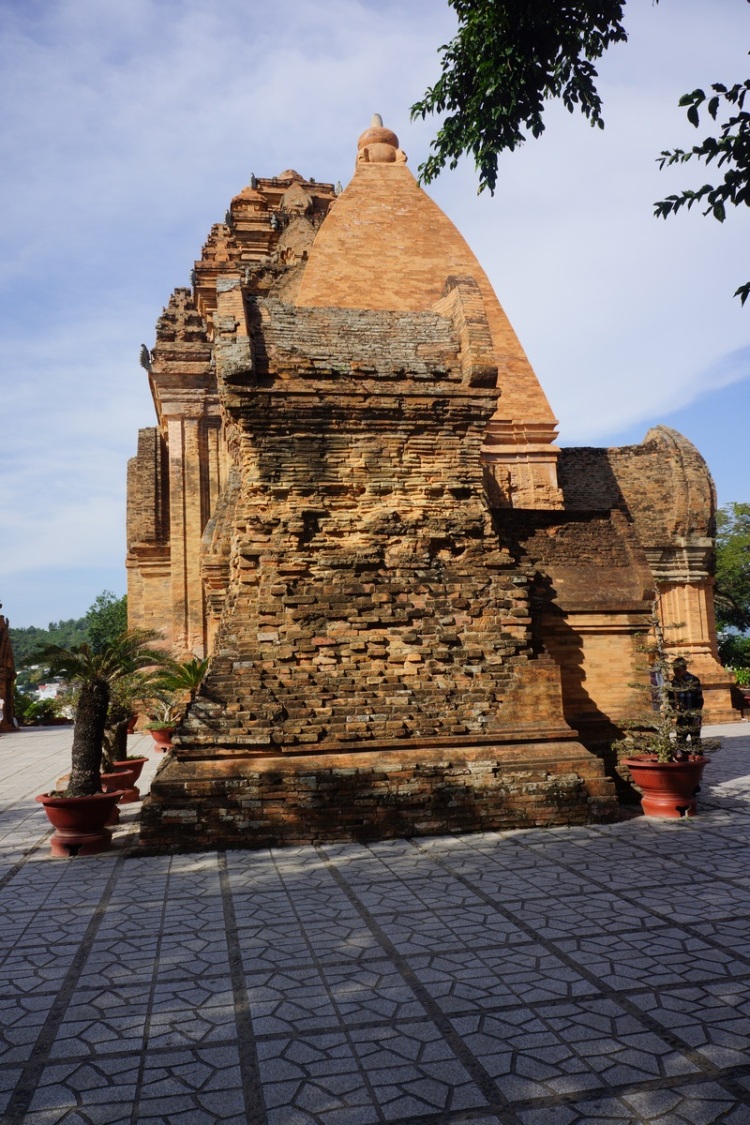
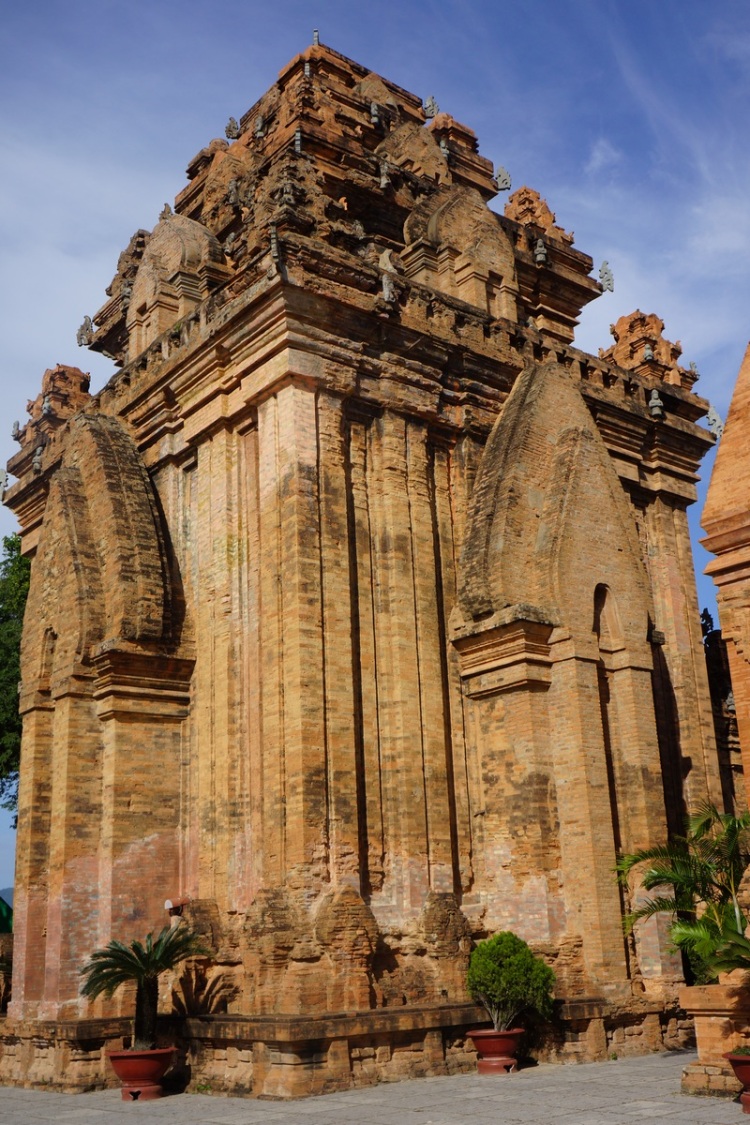
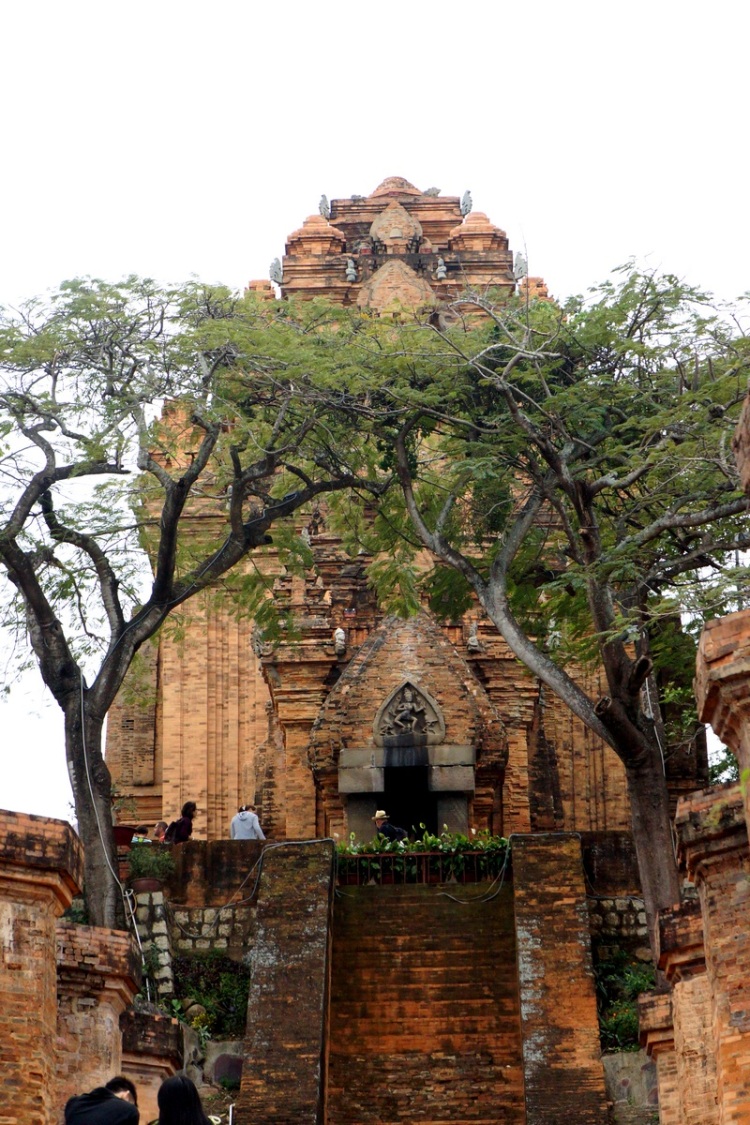
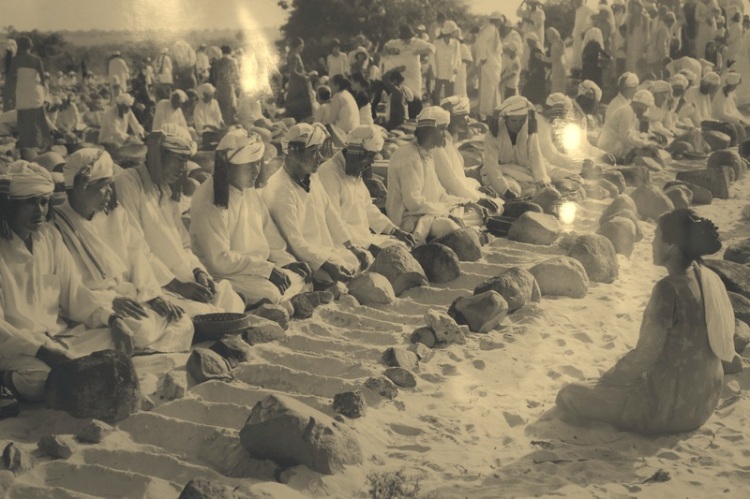
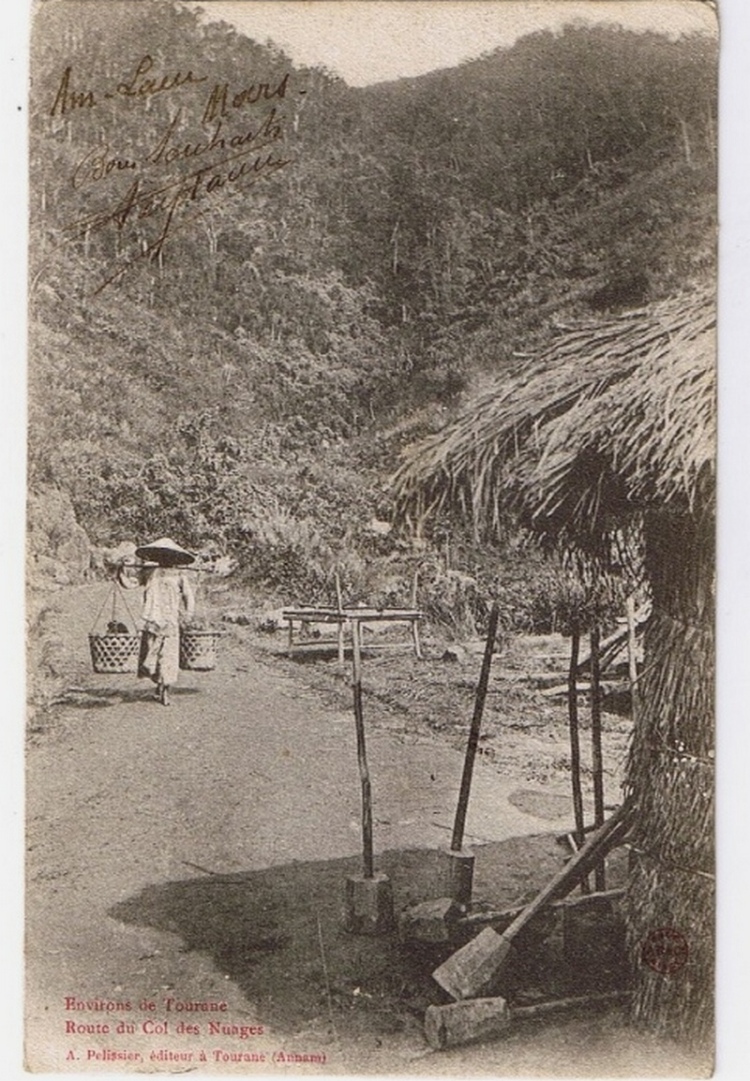
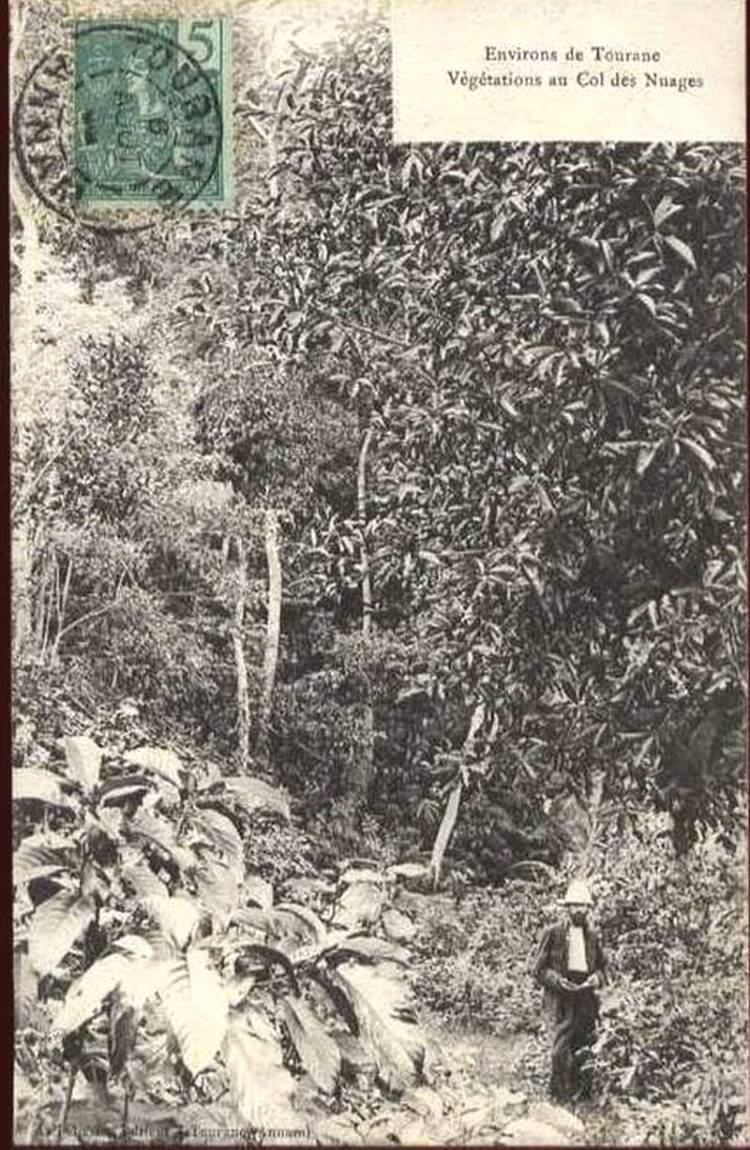
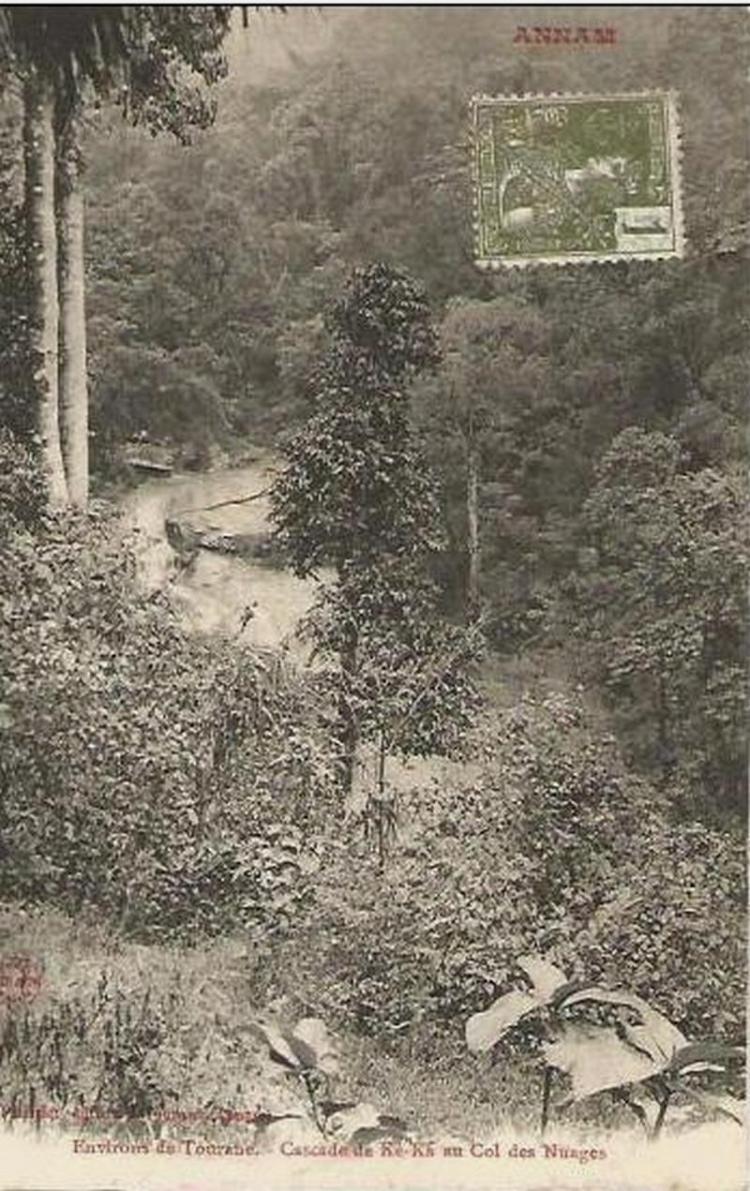
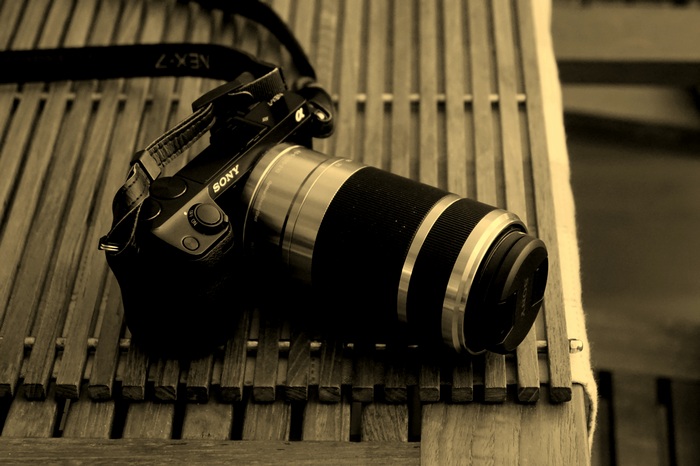
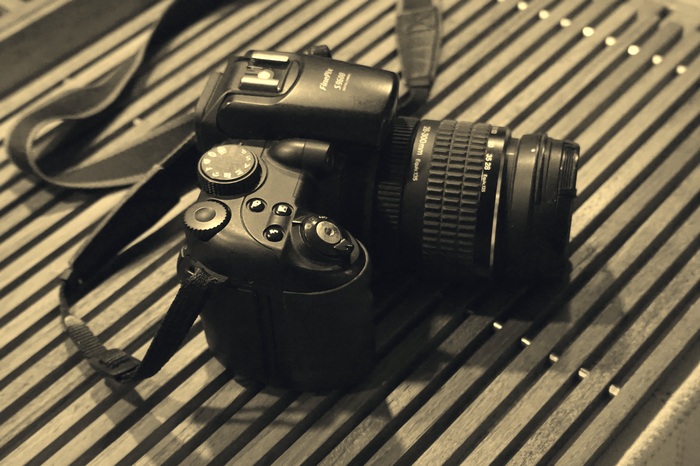
Pingback: Quê hương là gì ư ? | vietnam kyniem
The Champa Kingdom : the history of an extinct Vietnamese culture, Georges Maspero; Walter E J Tips
This book is available from http://www.whitelotusbooks.com
LikeGefällt 1 Person